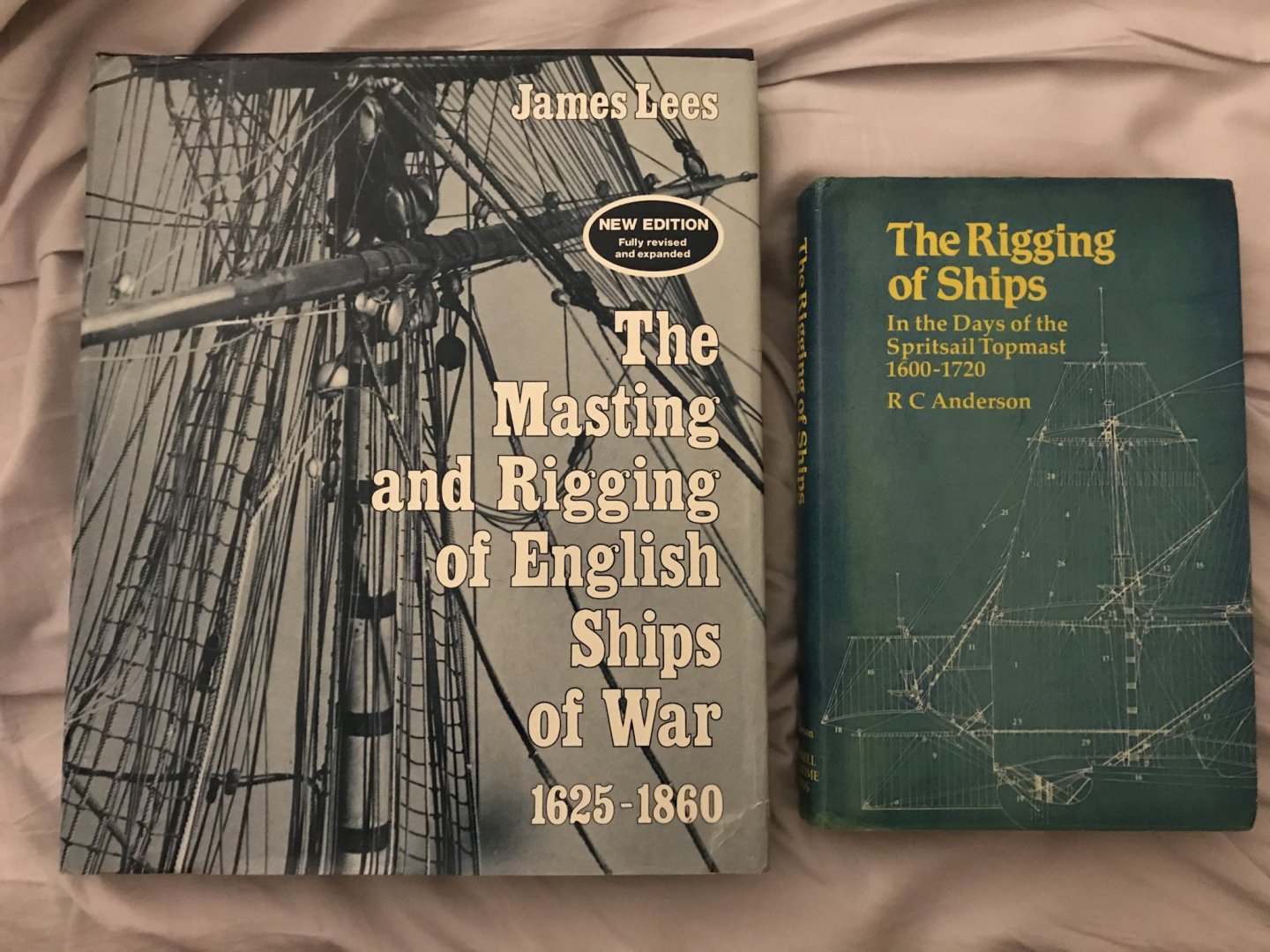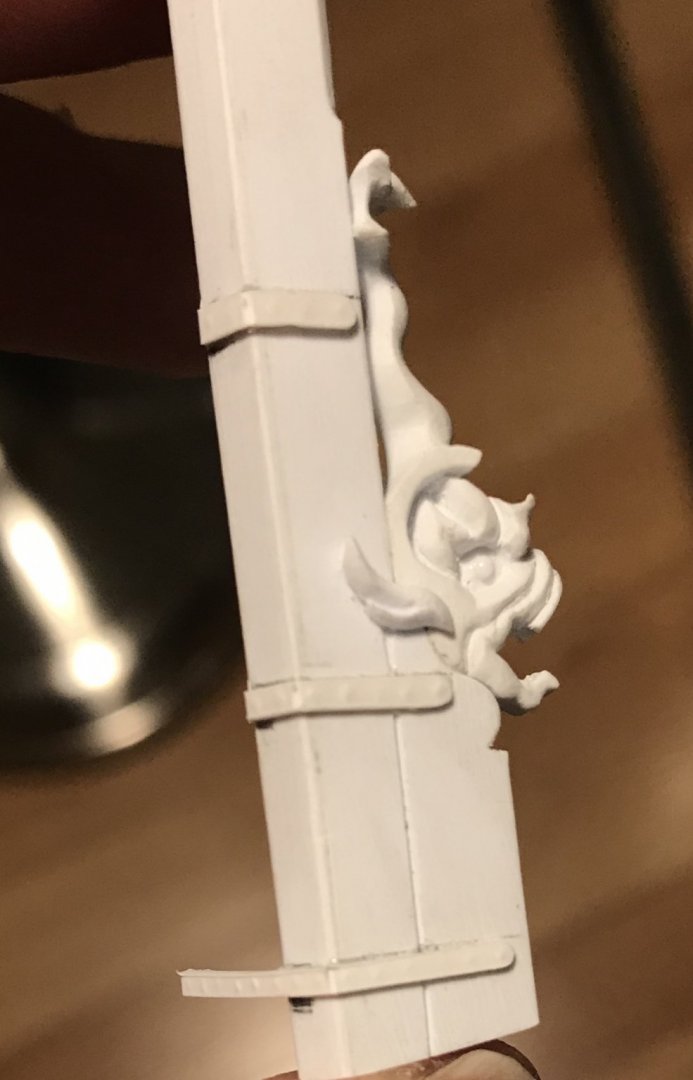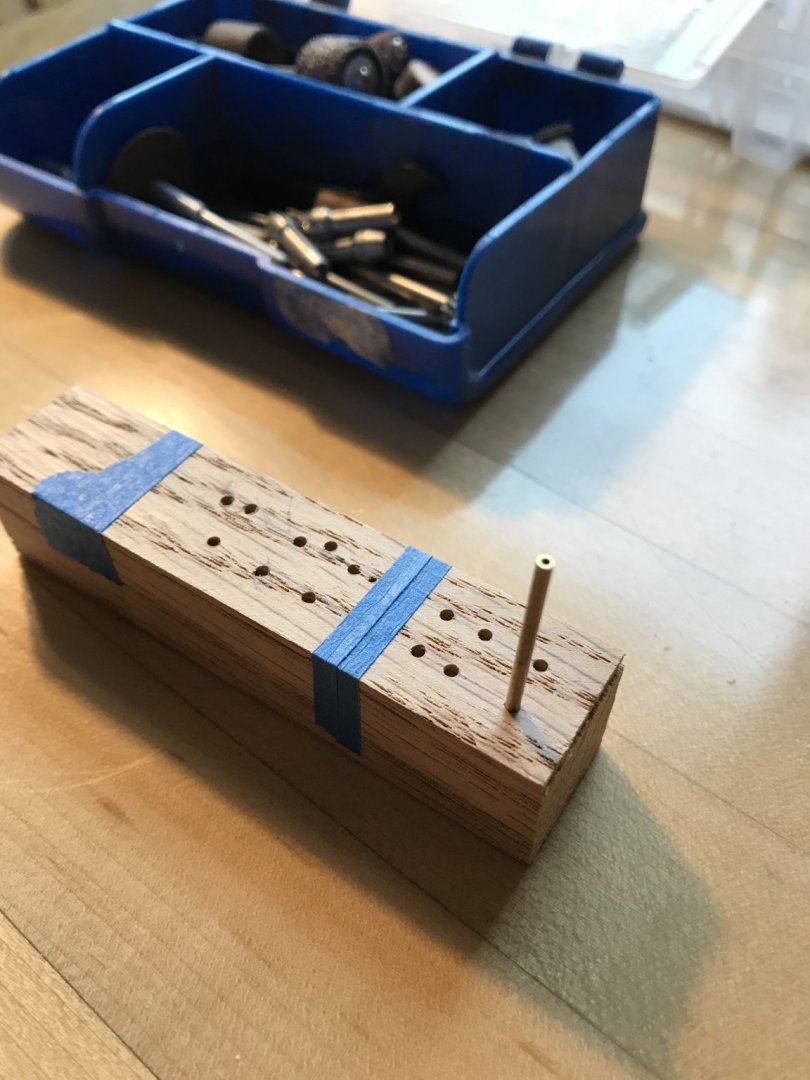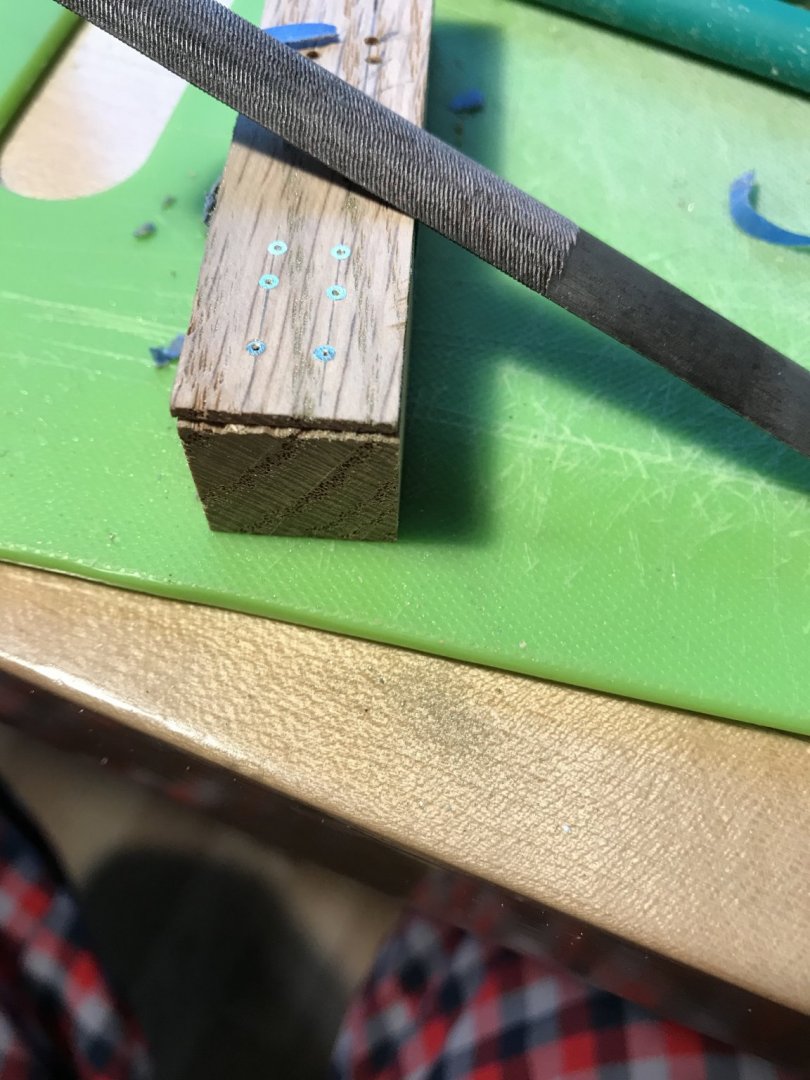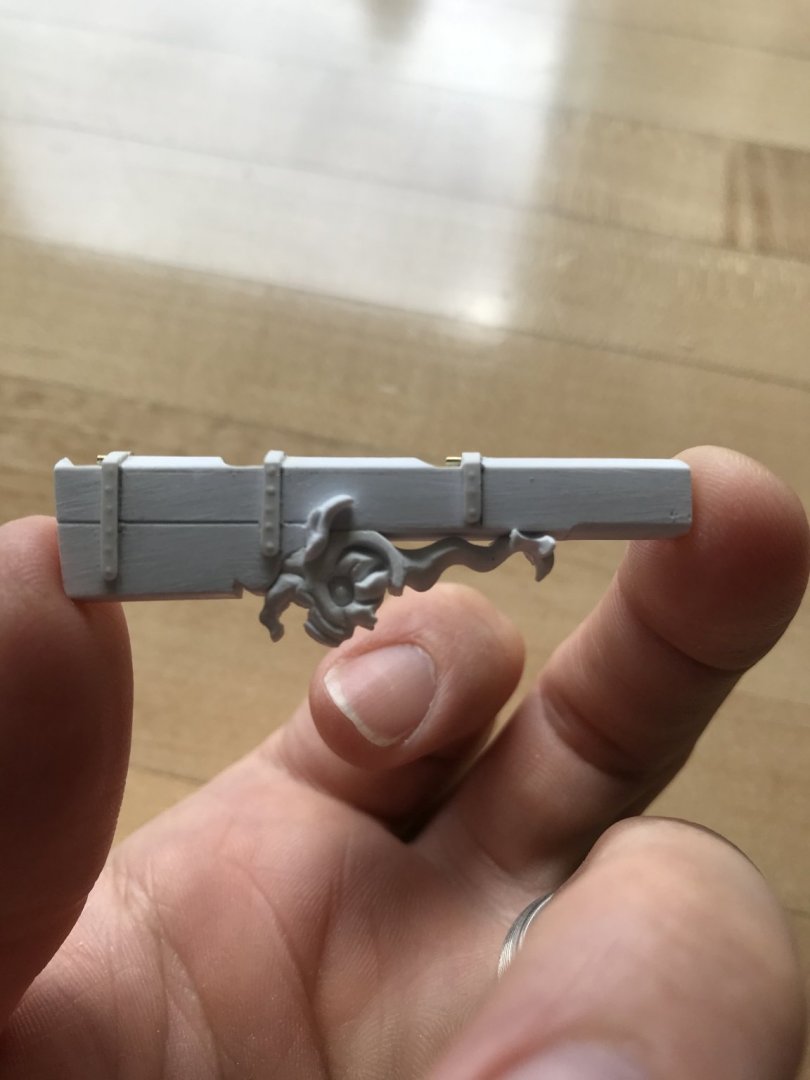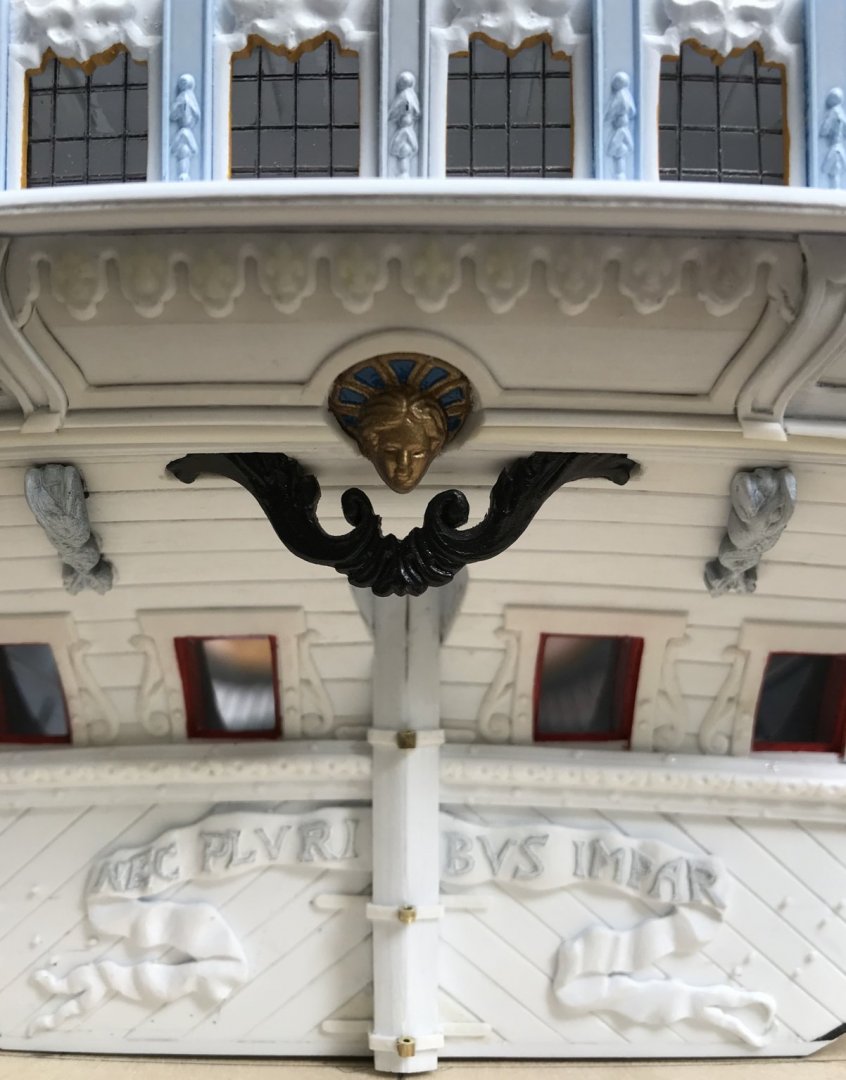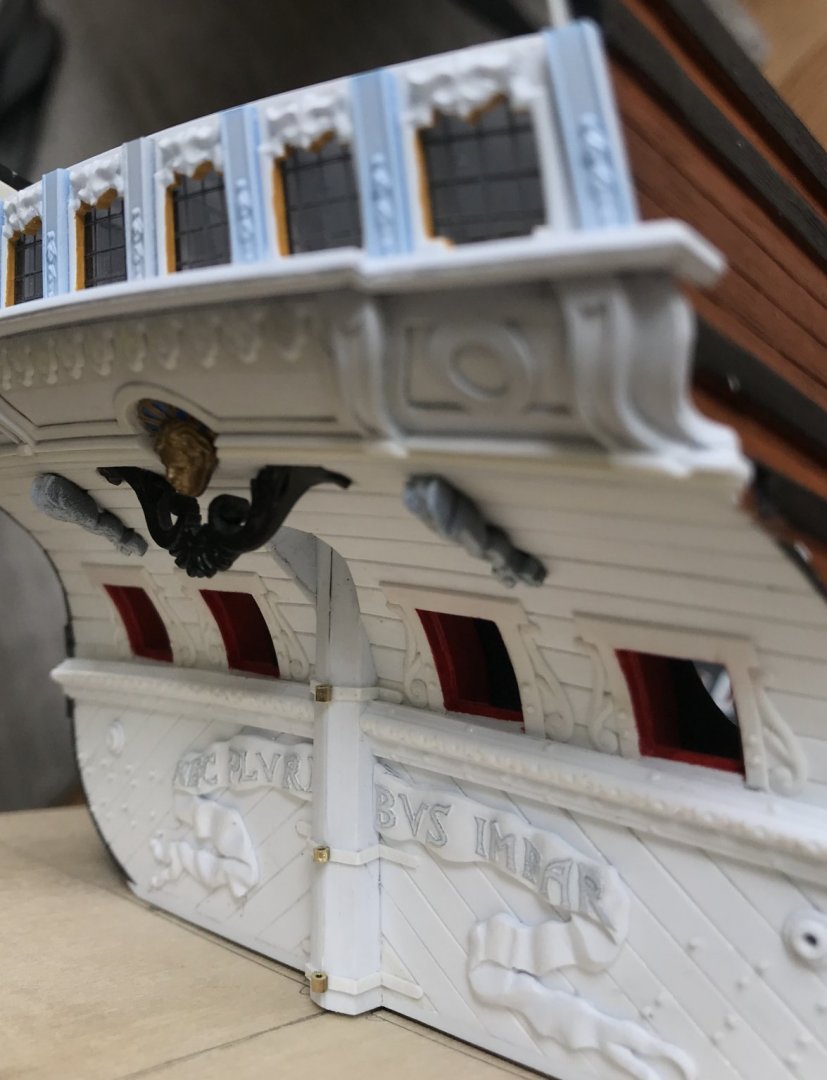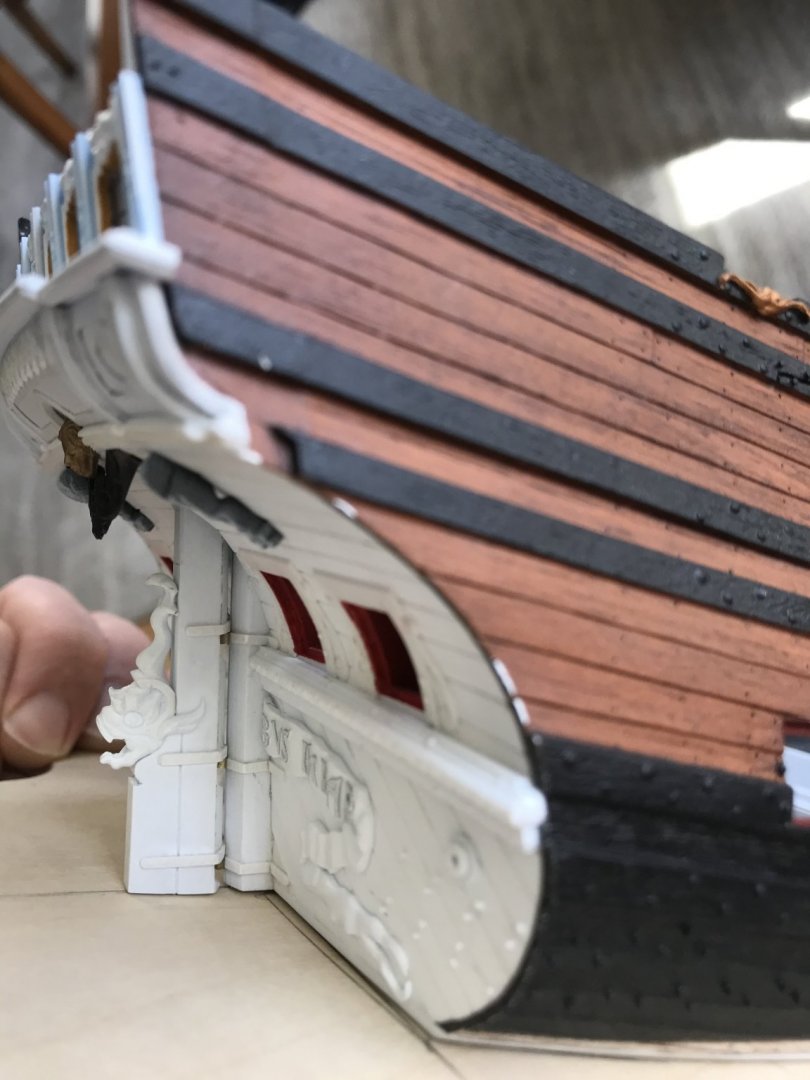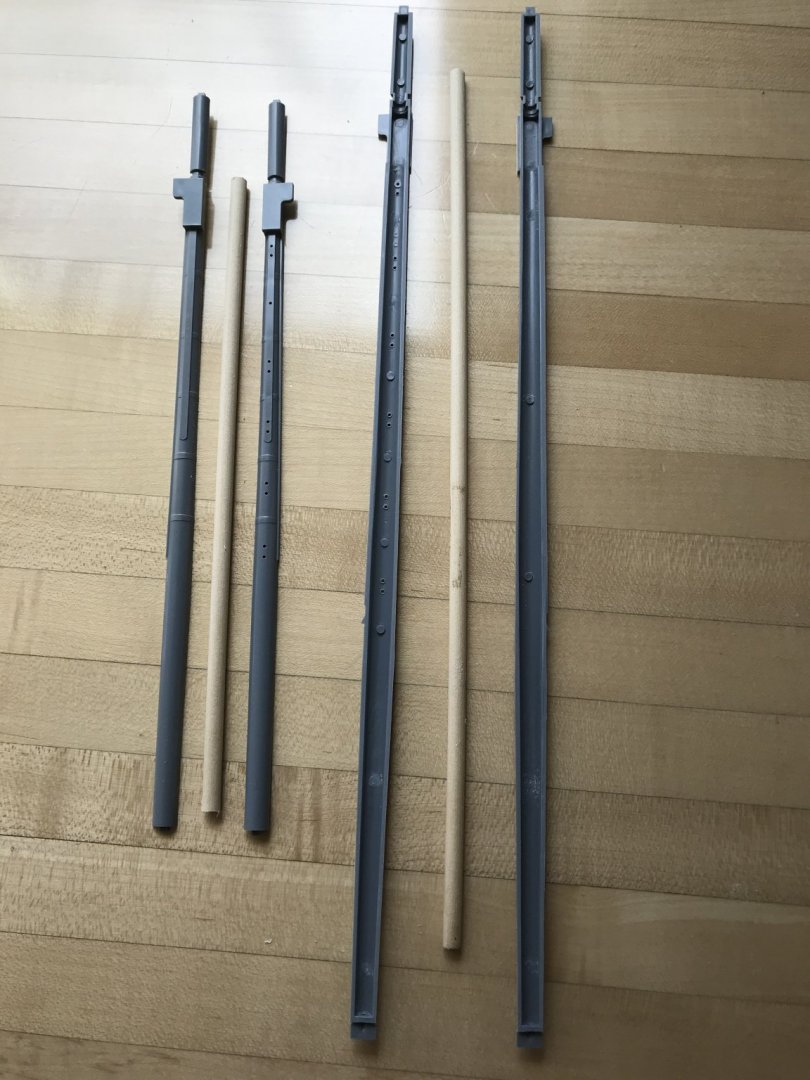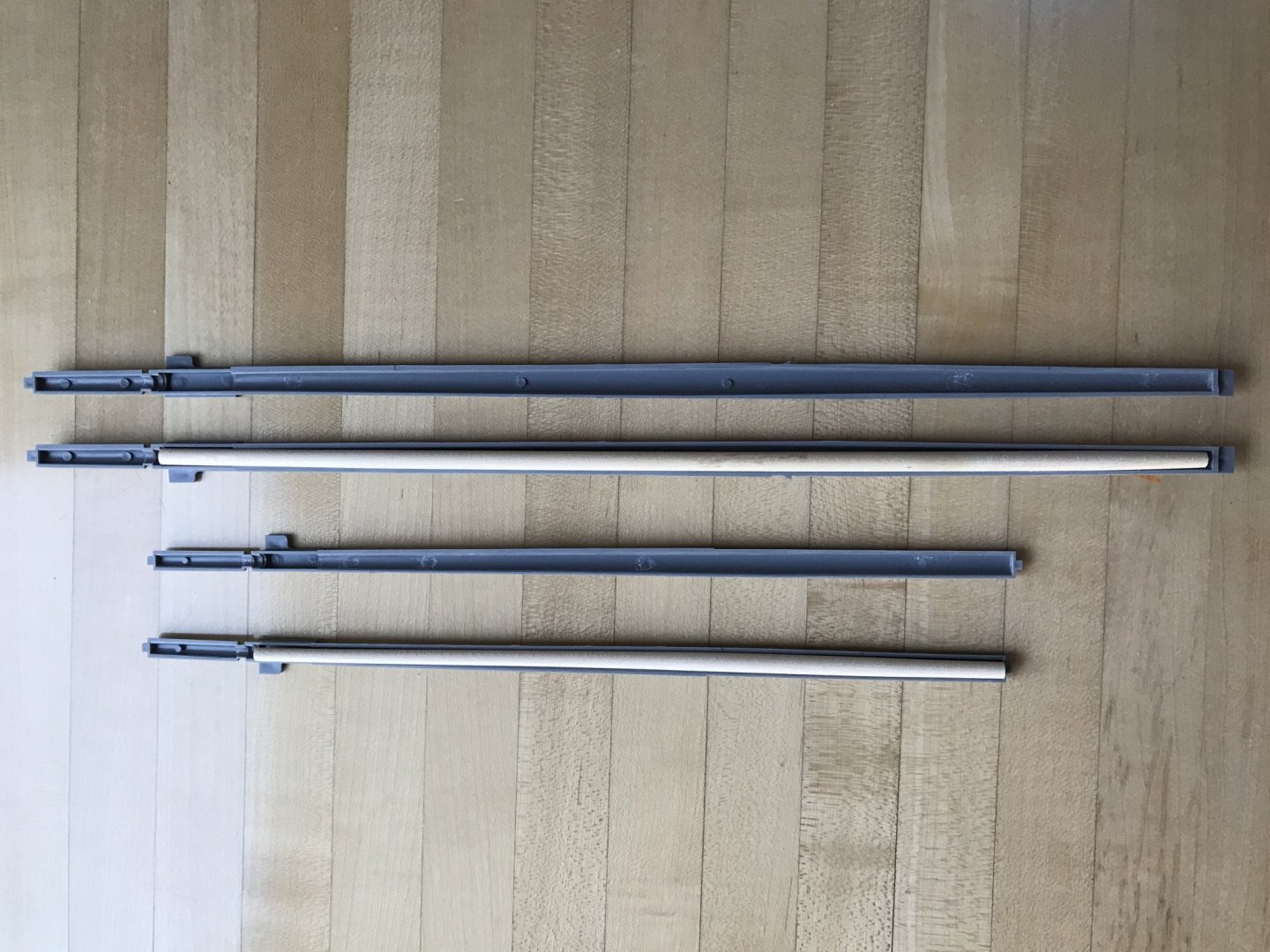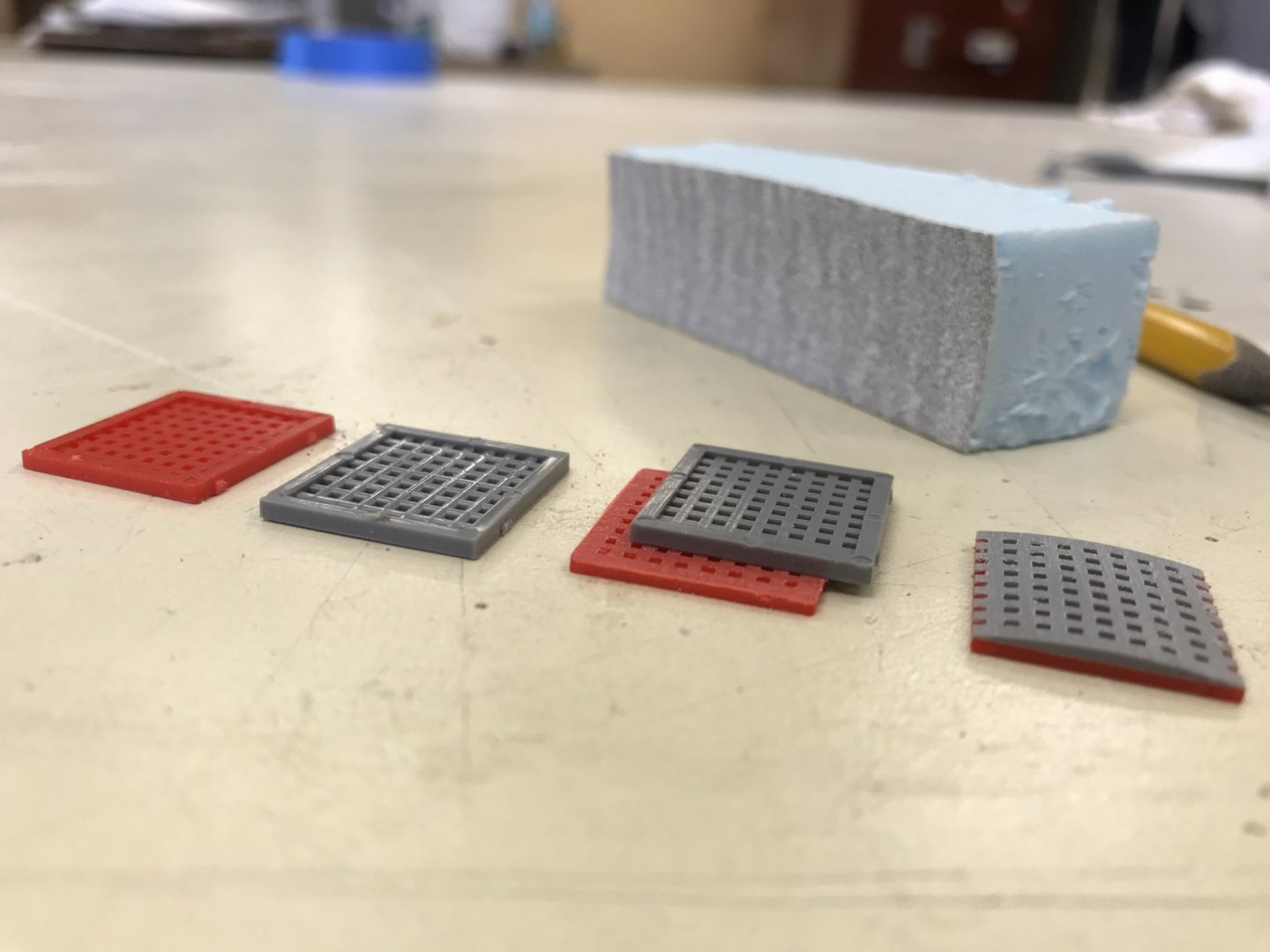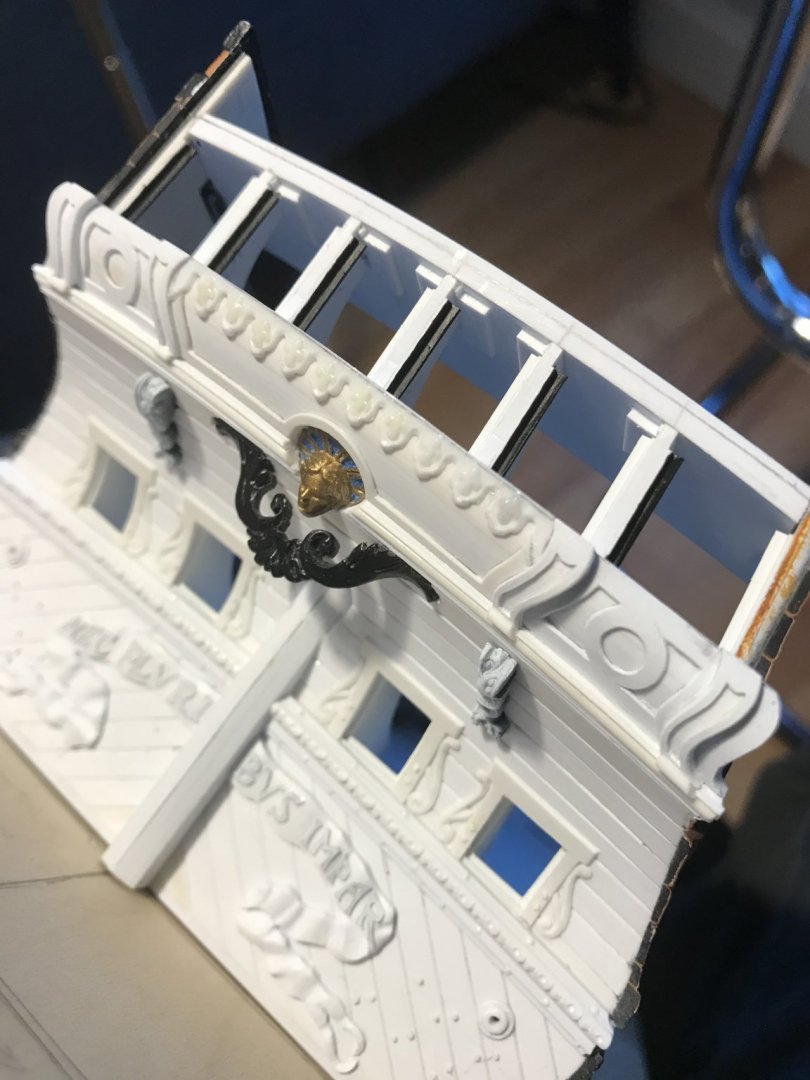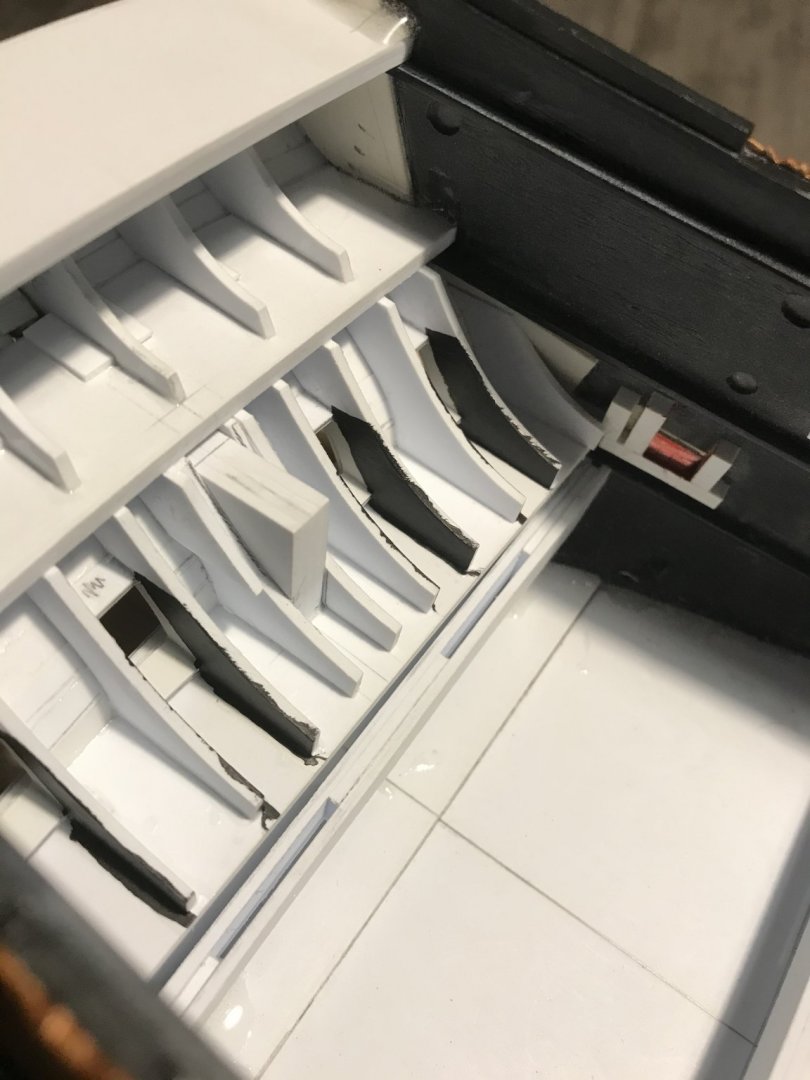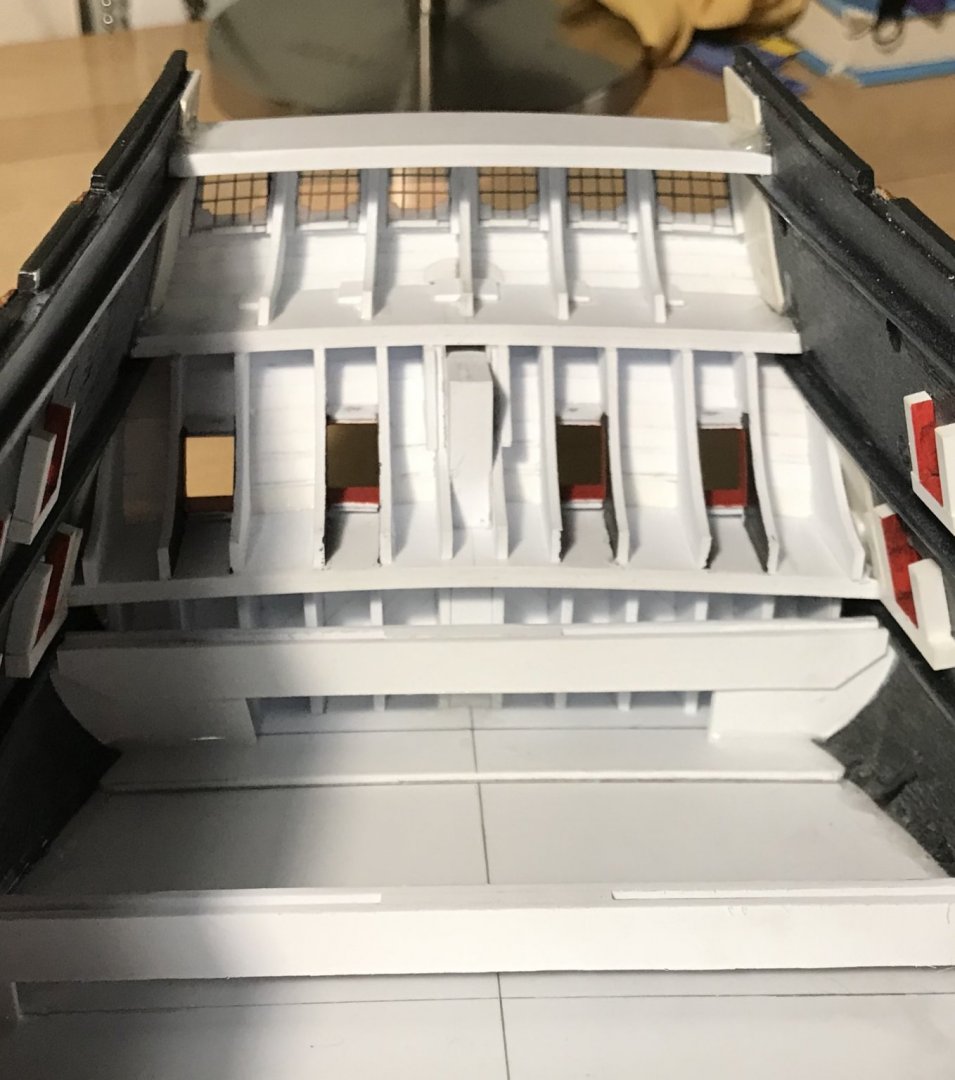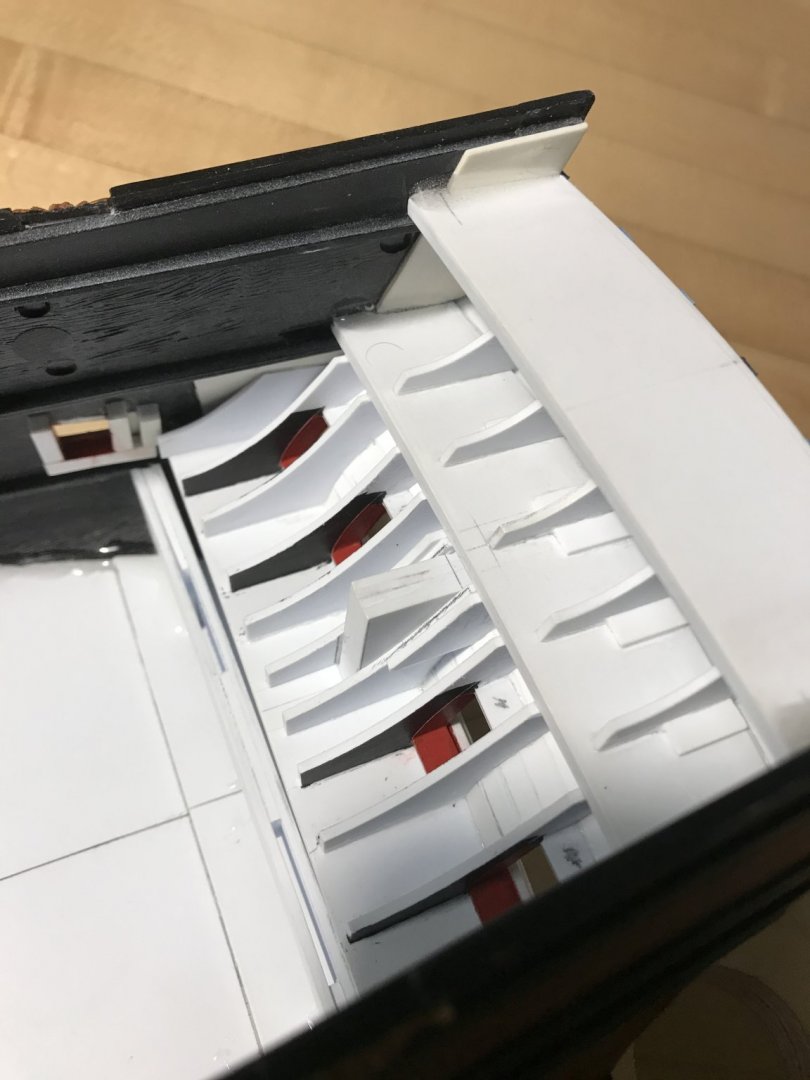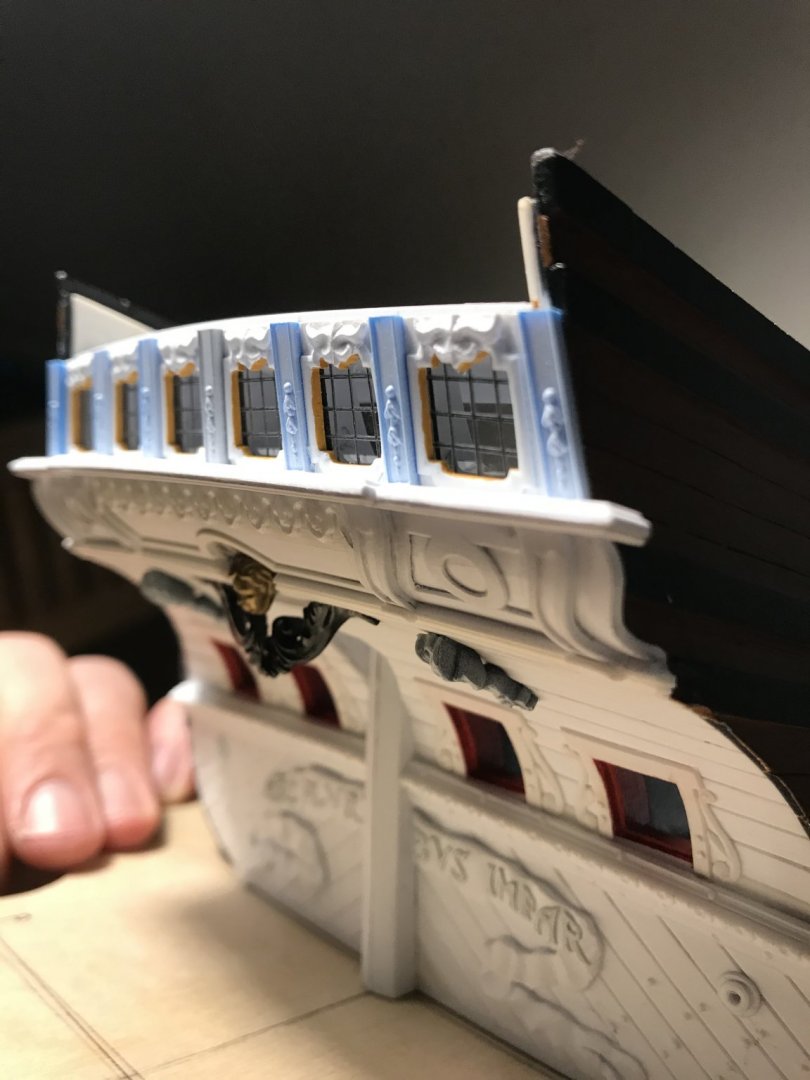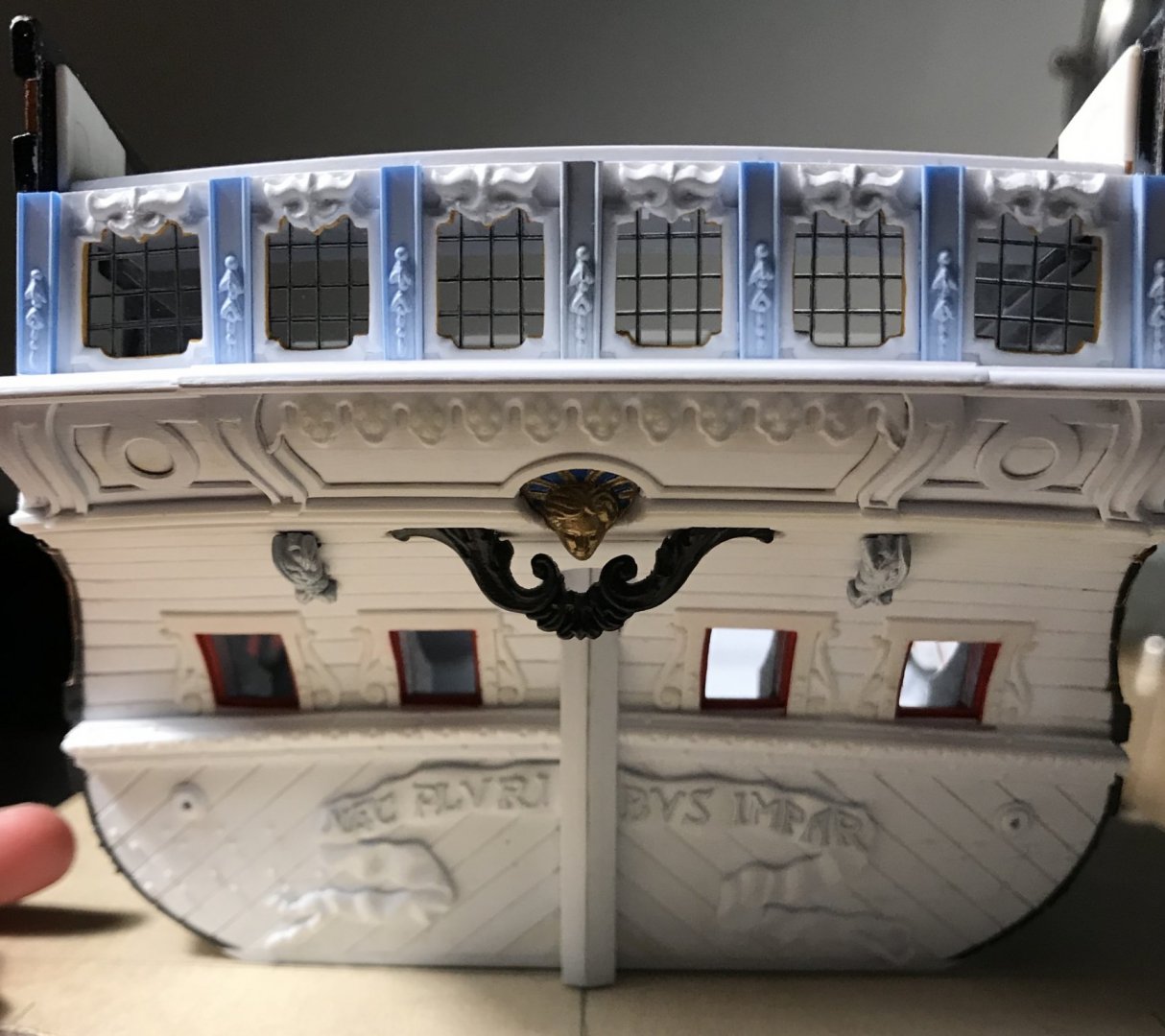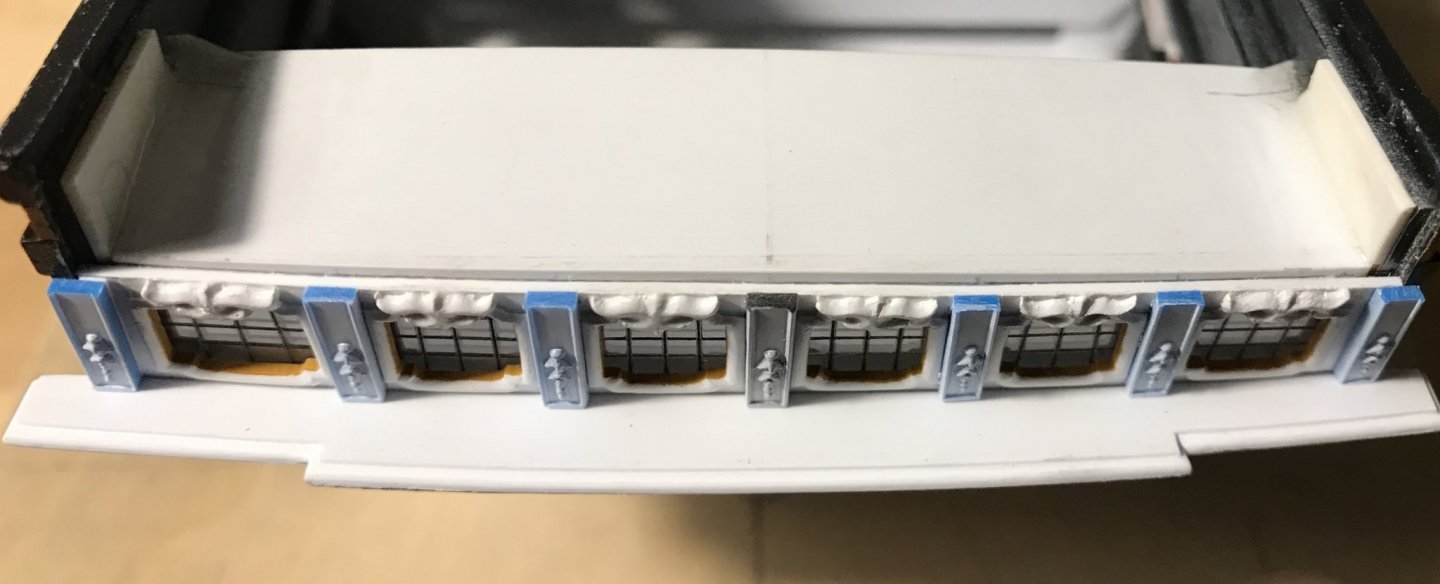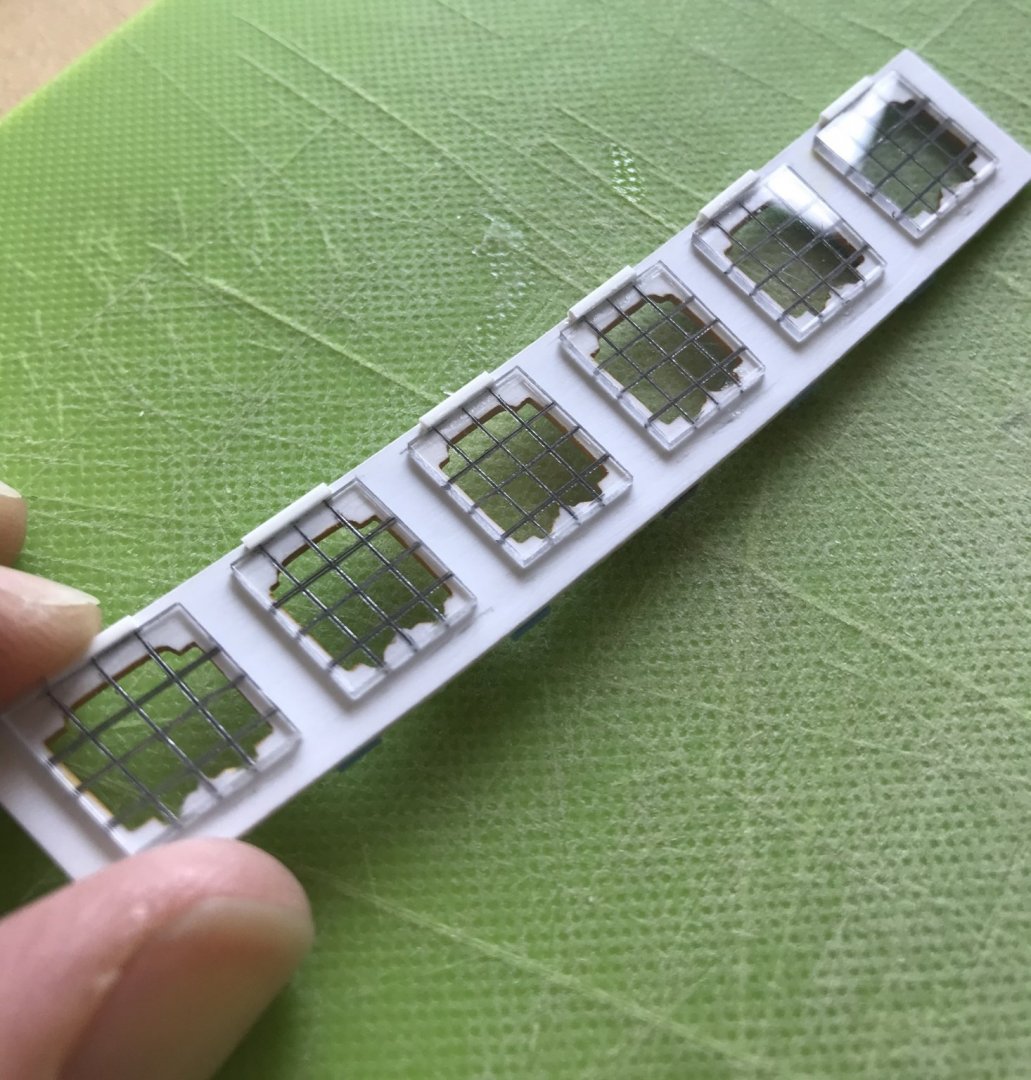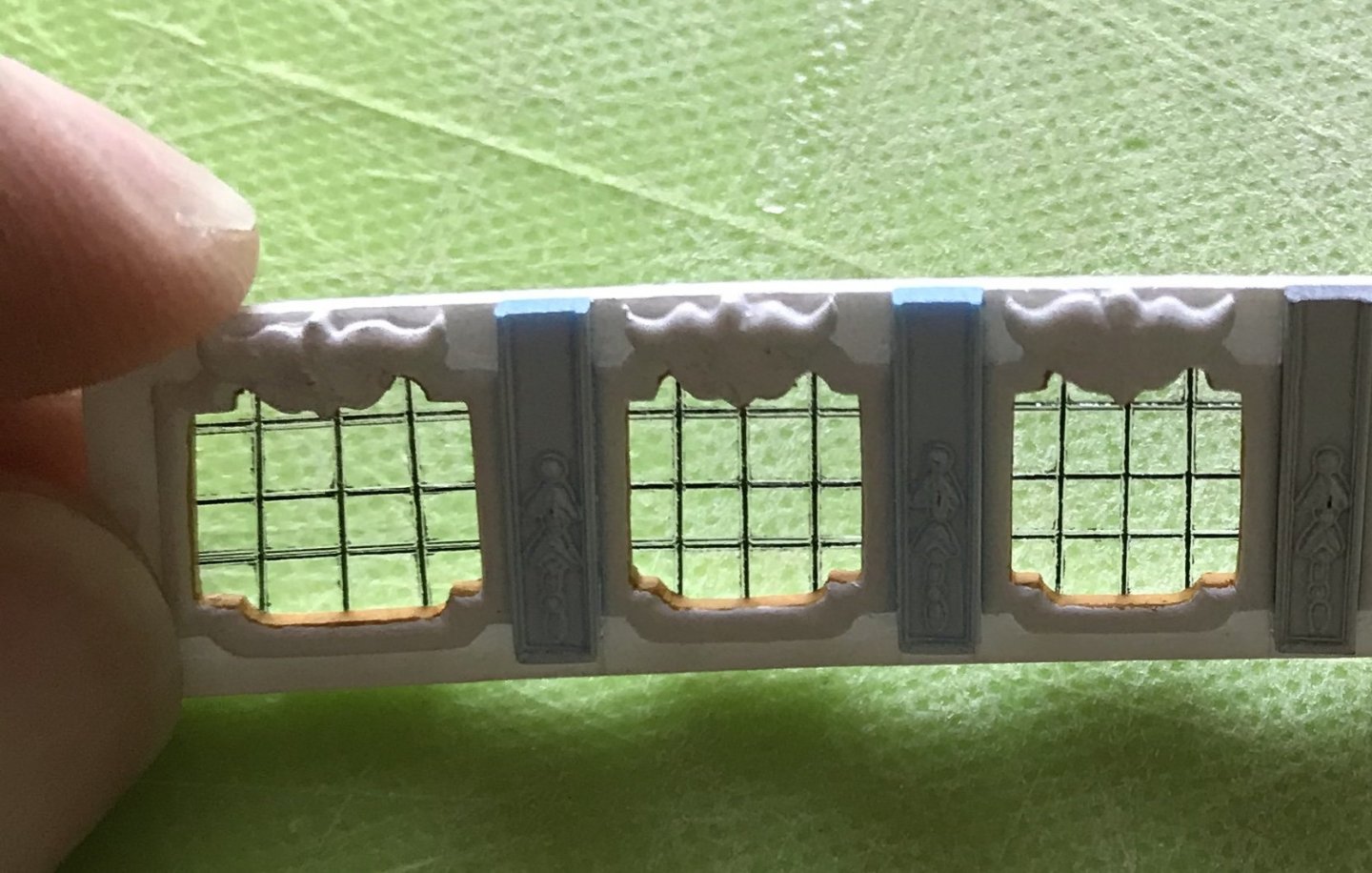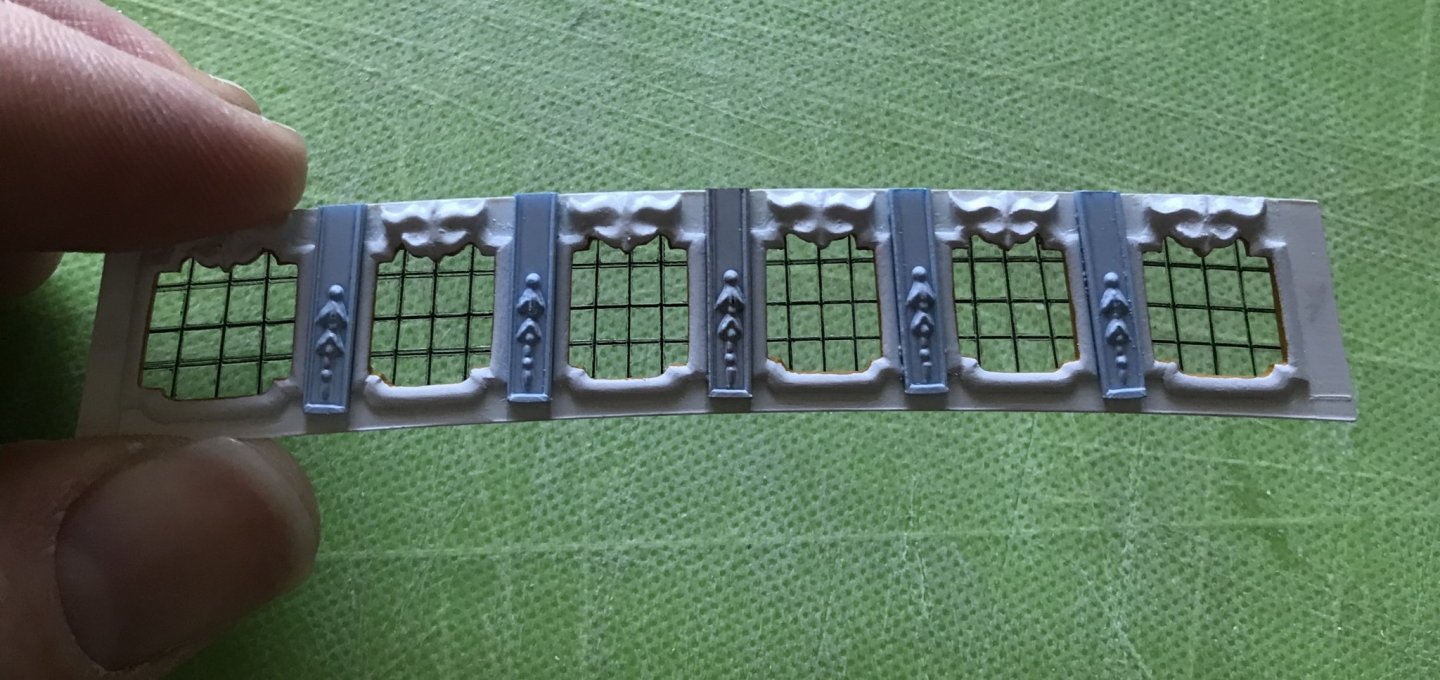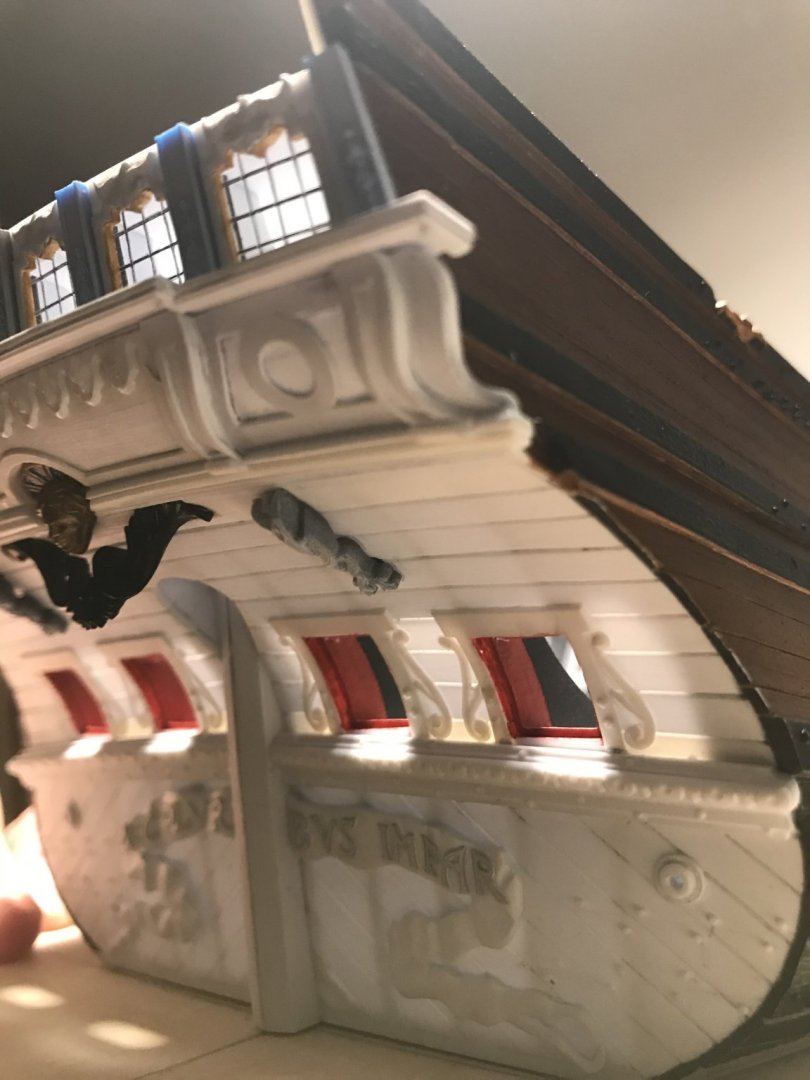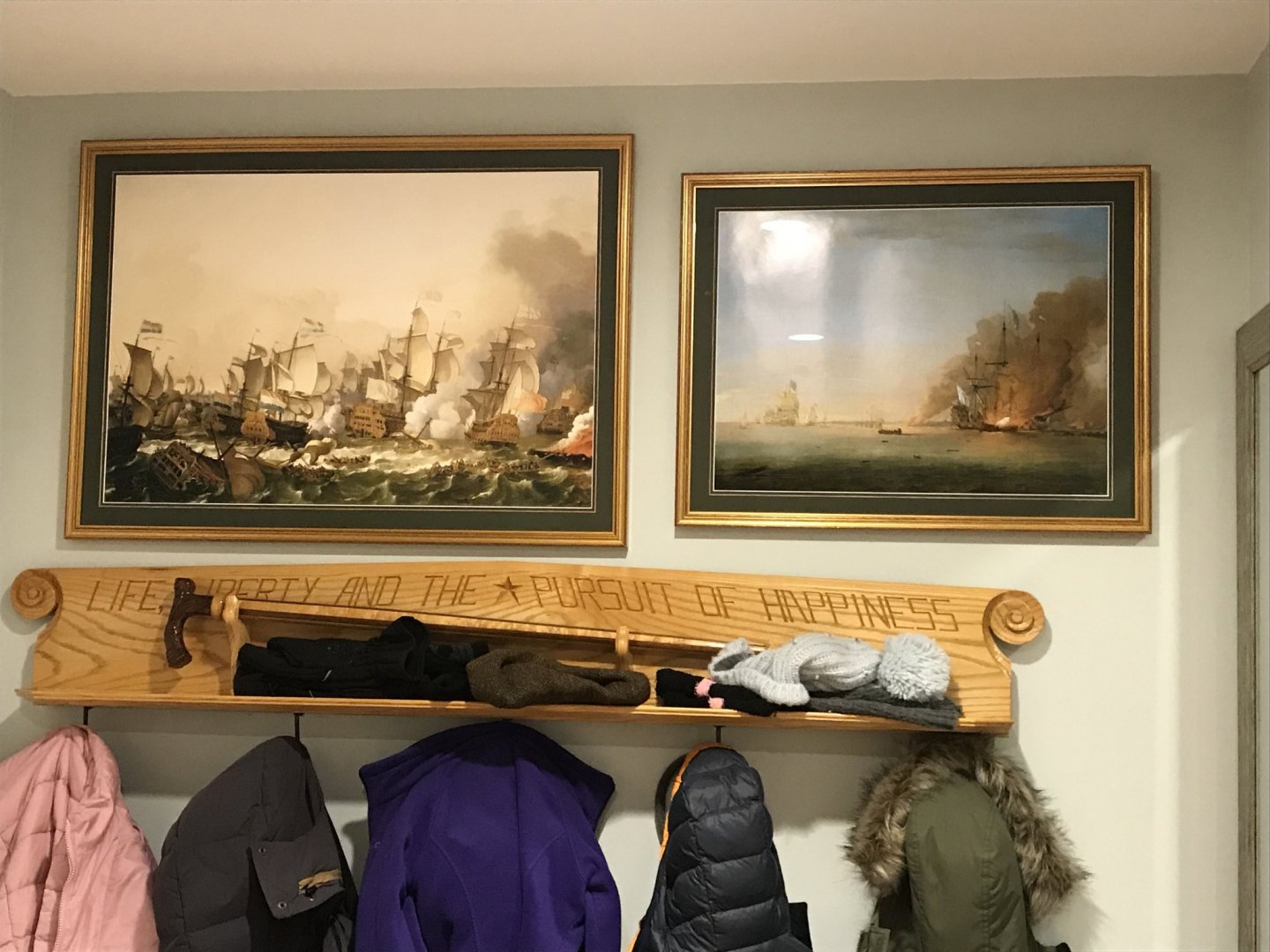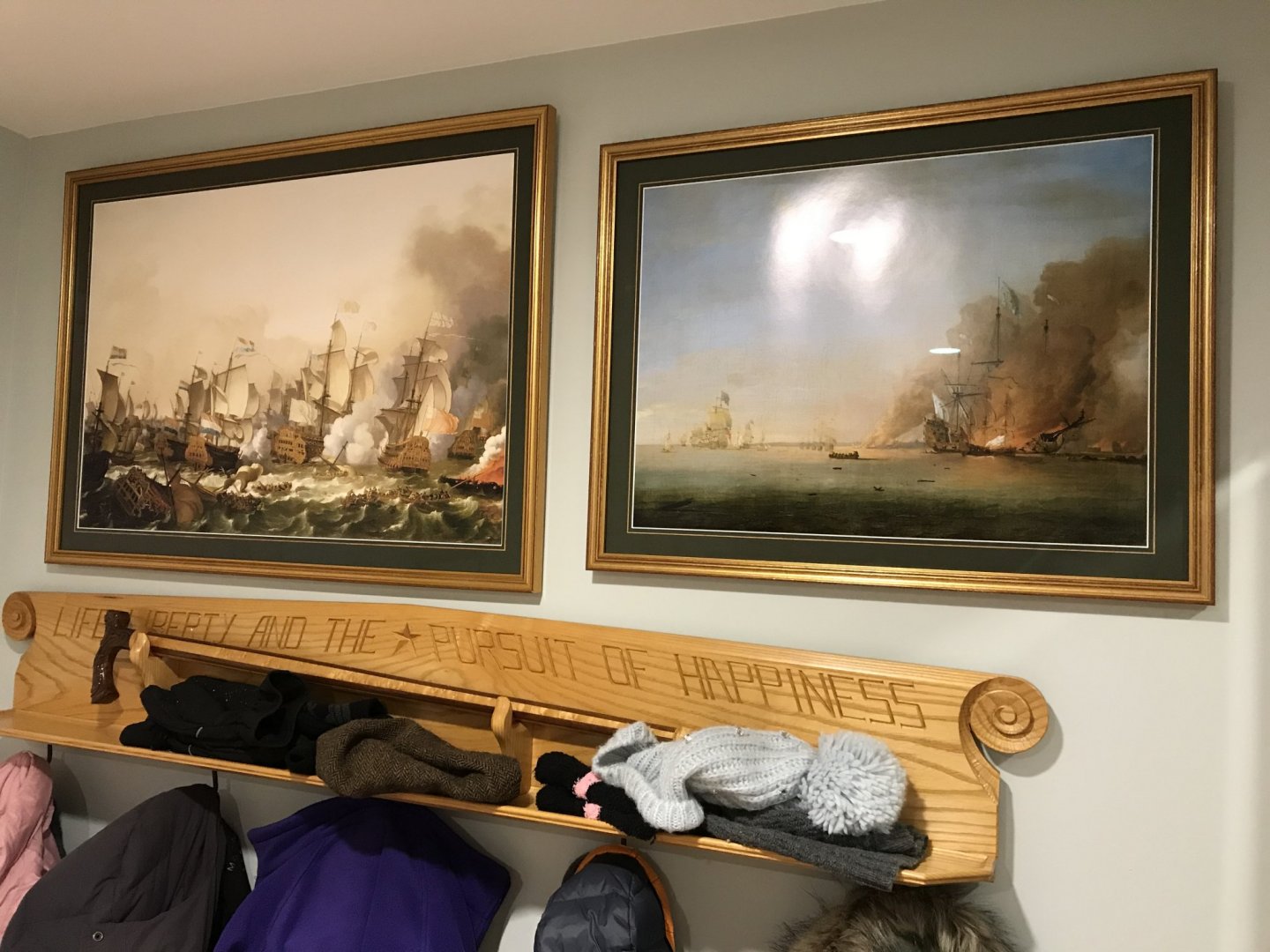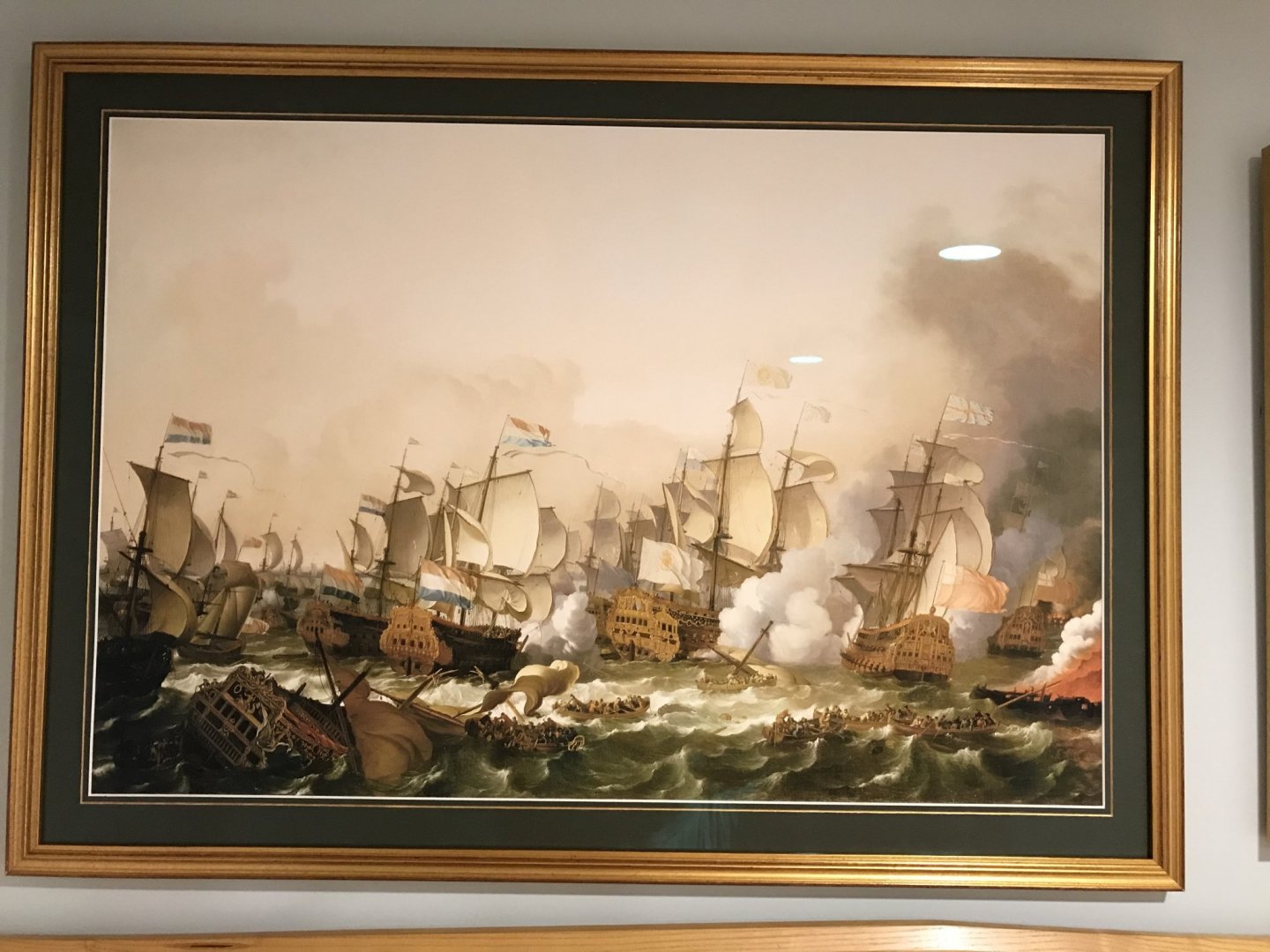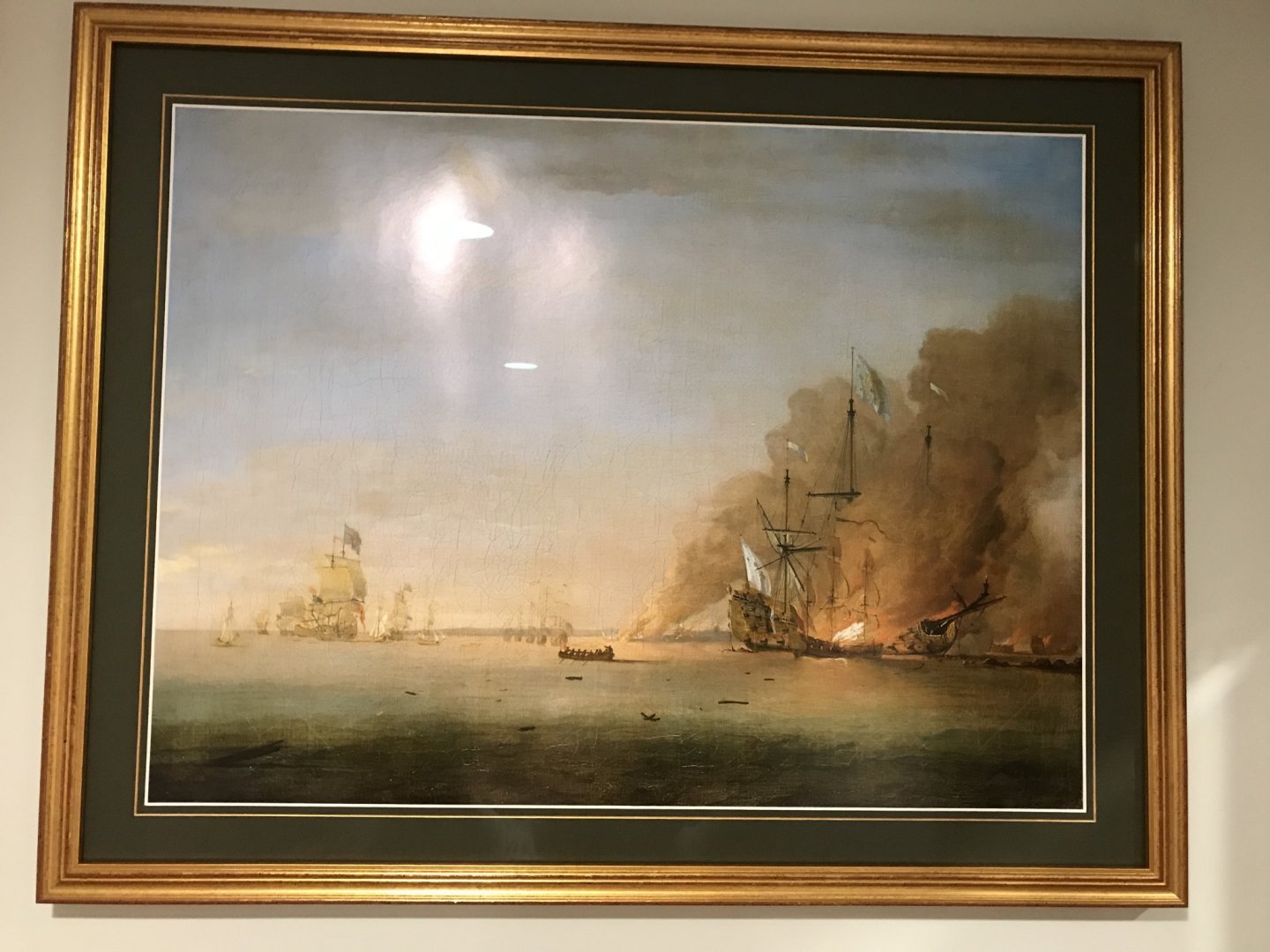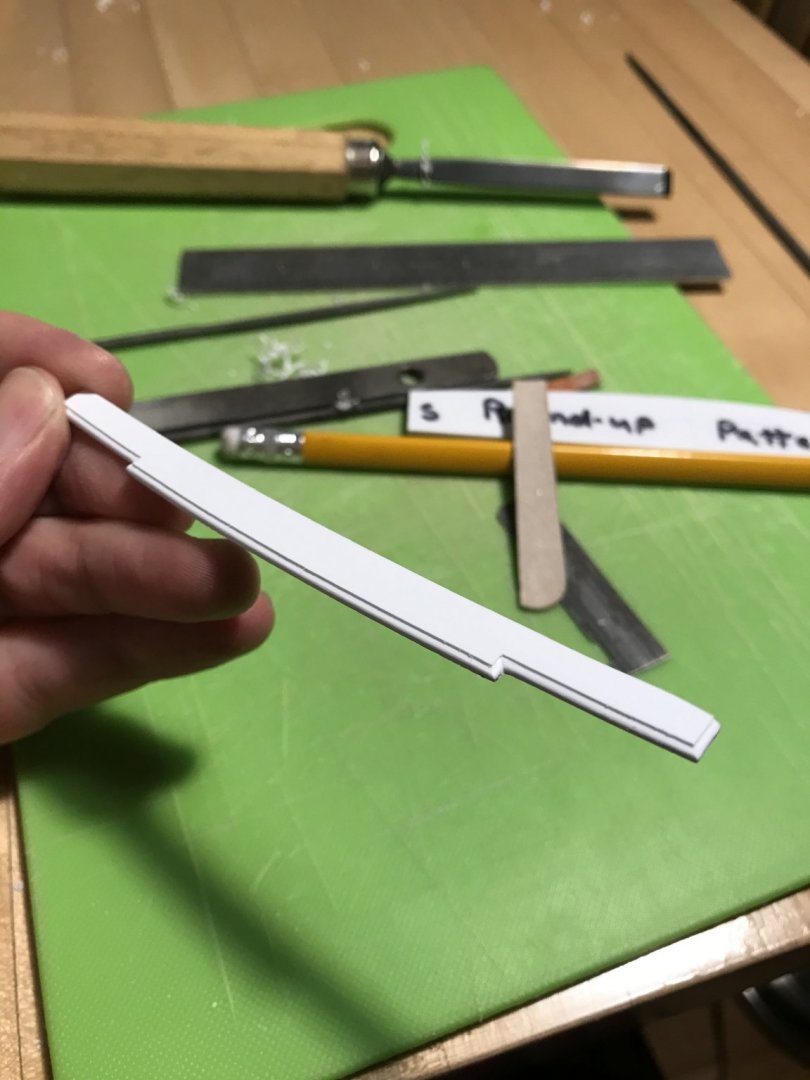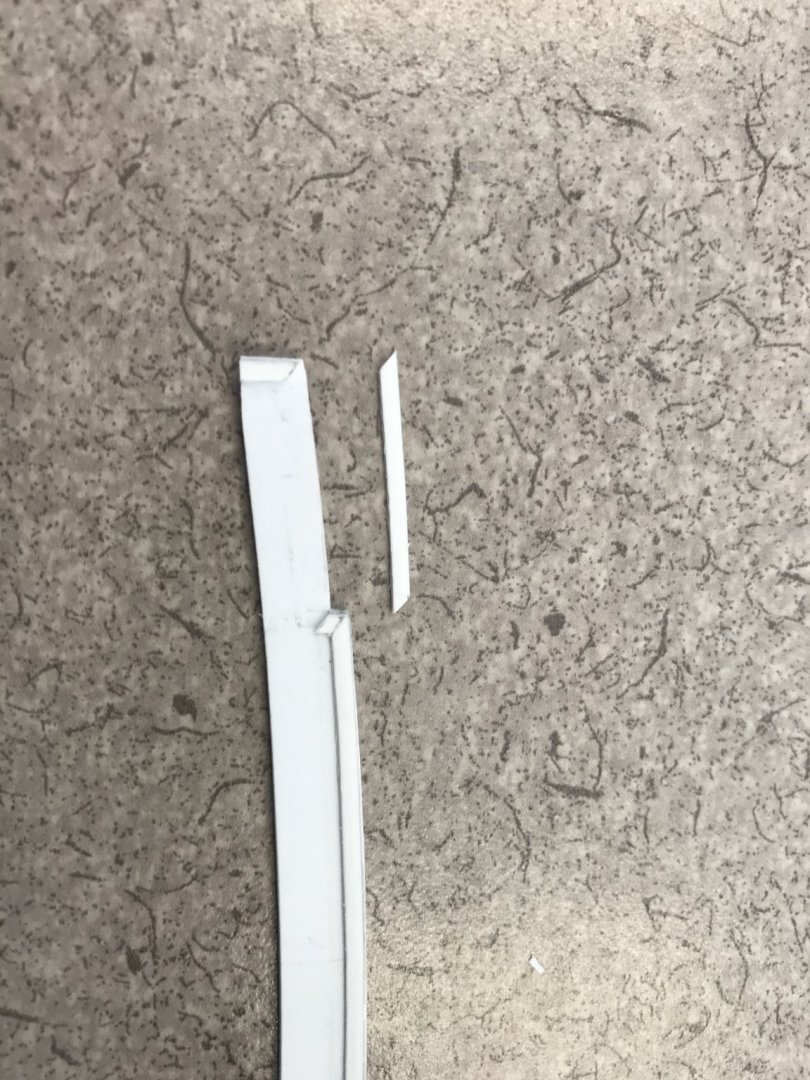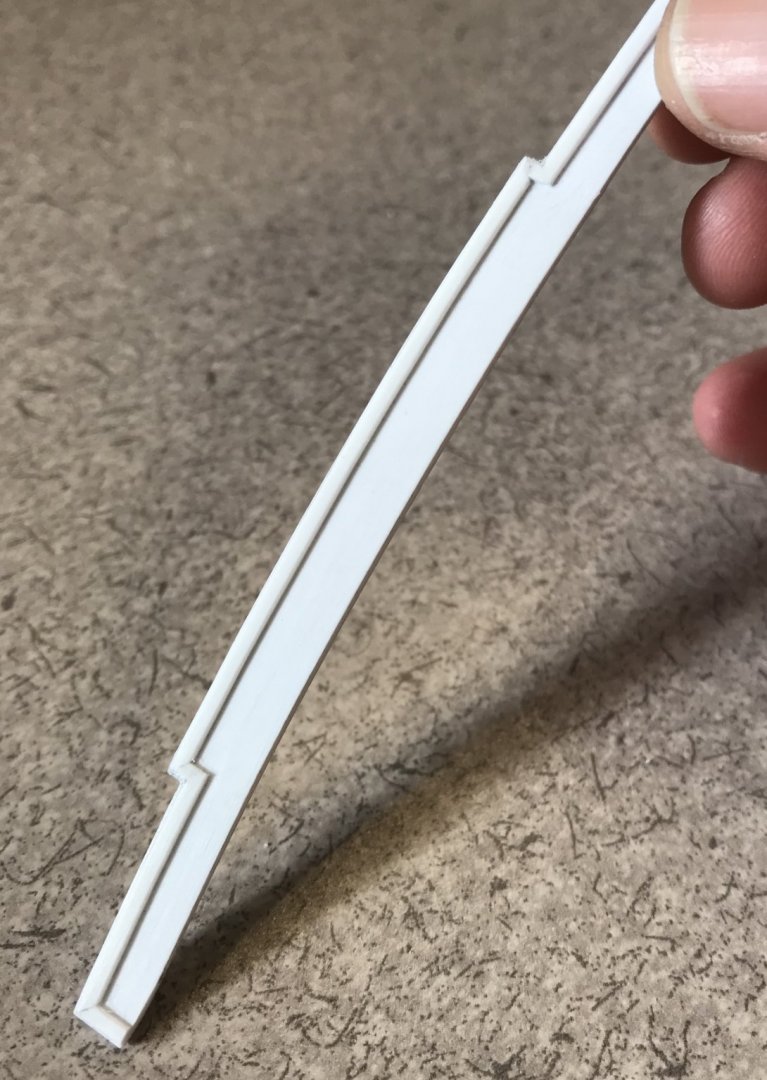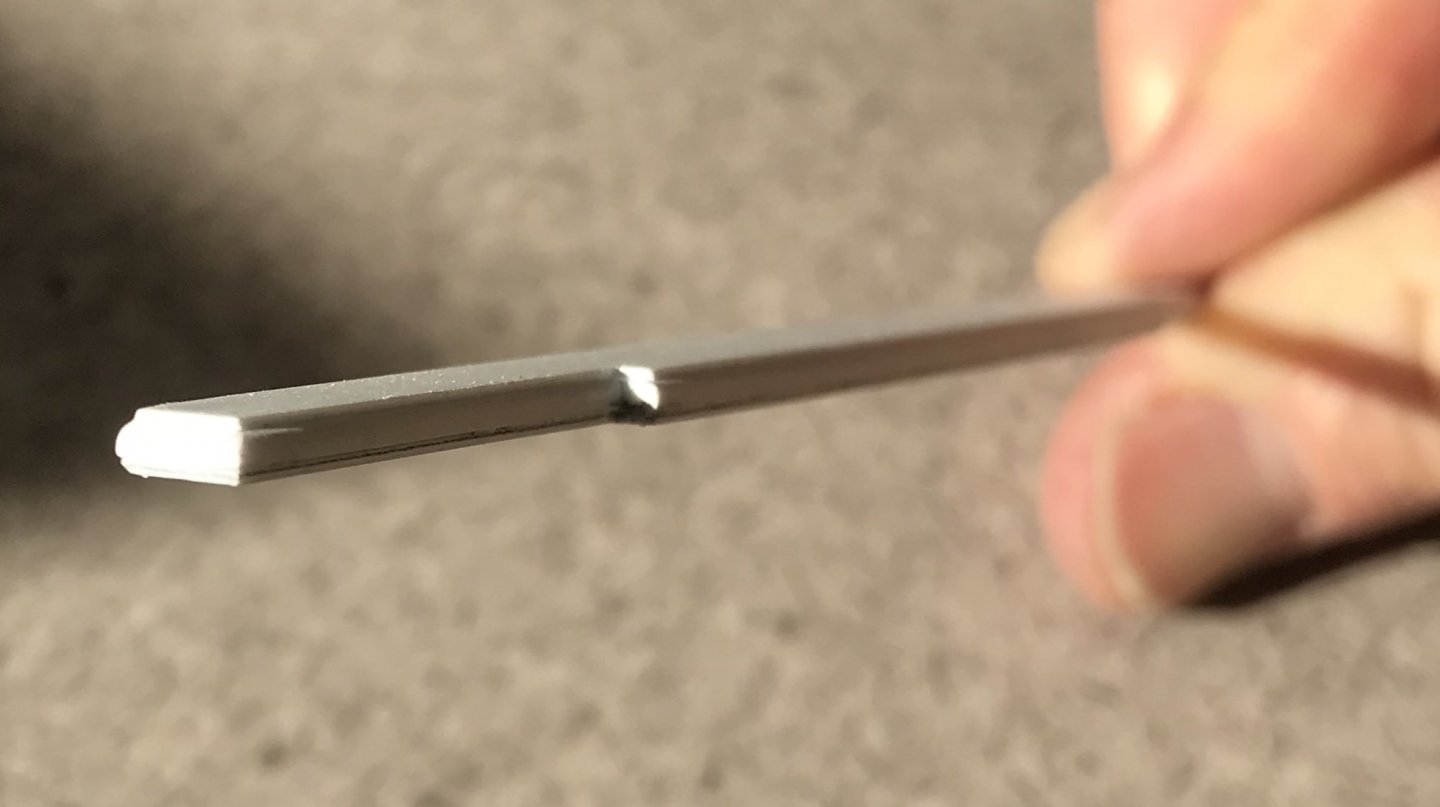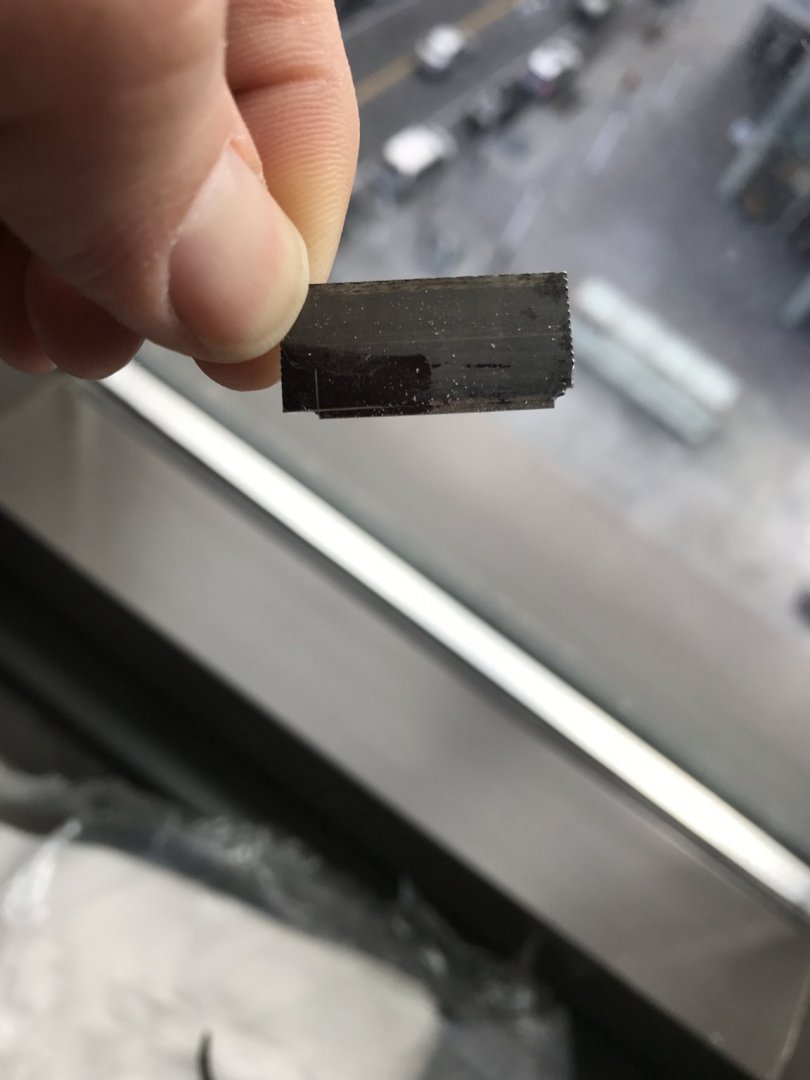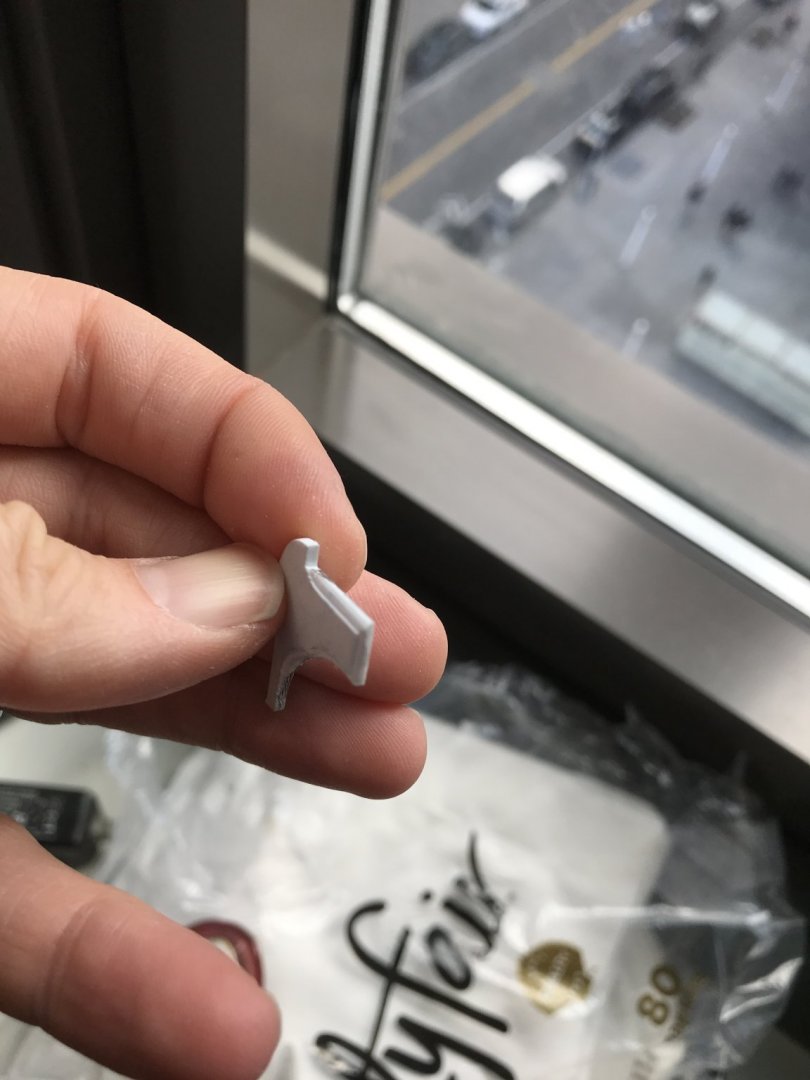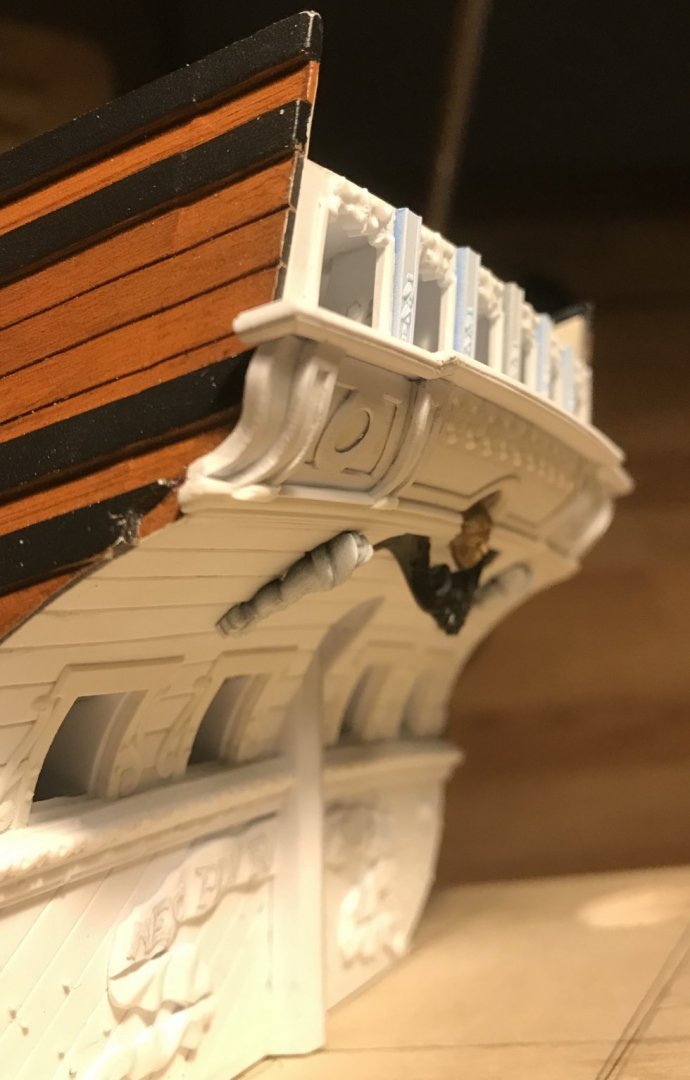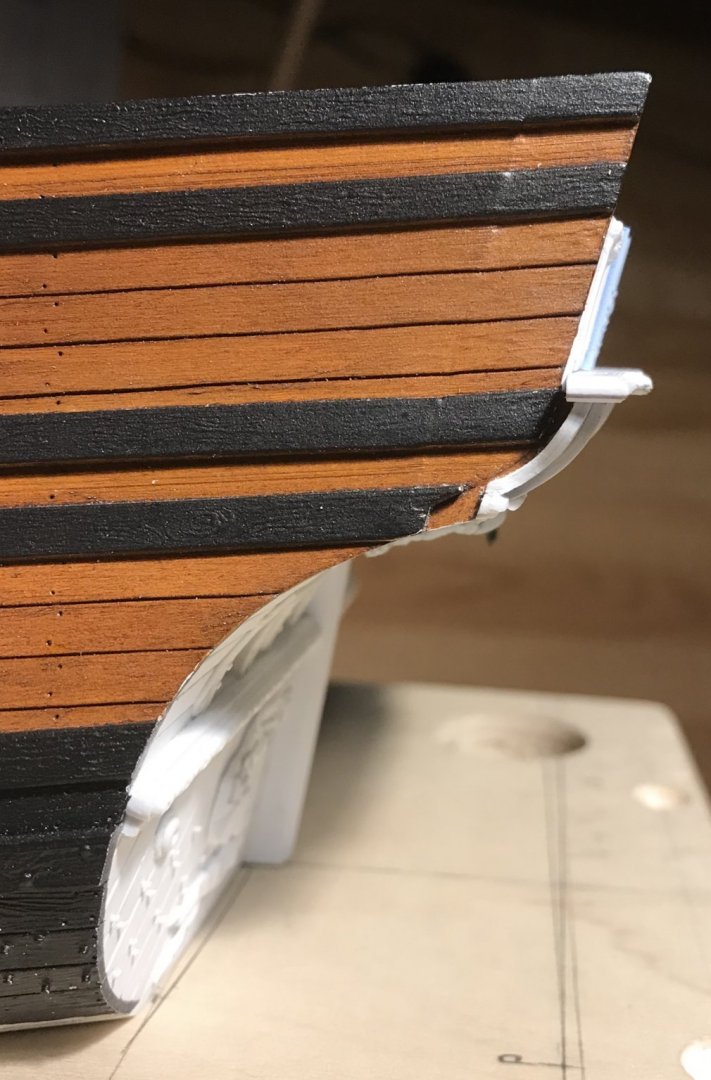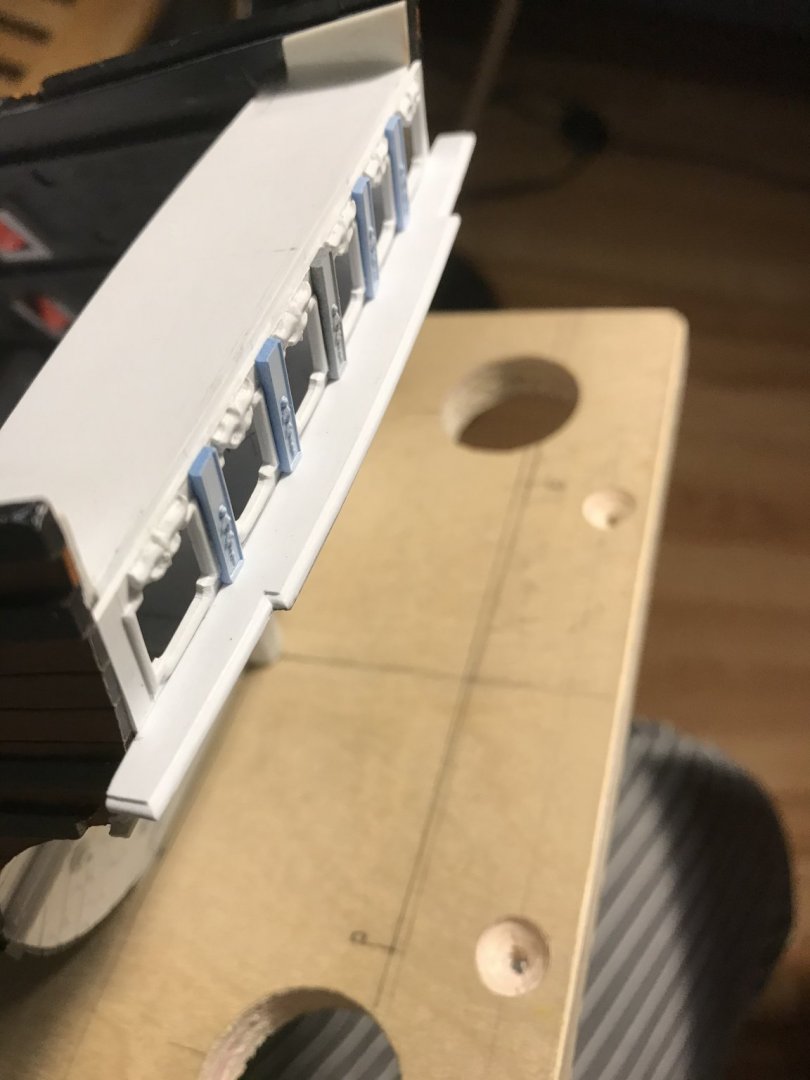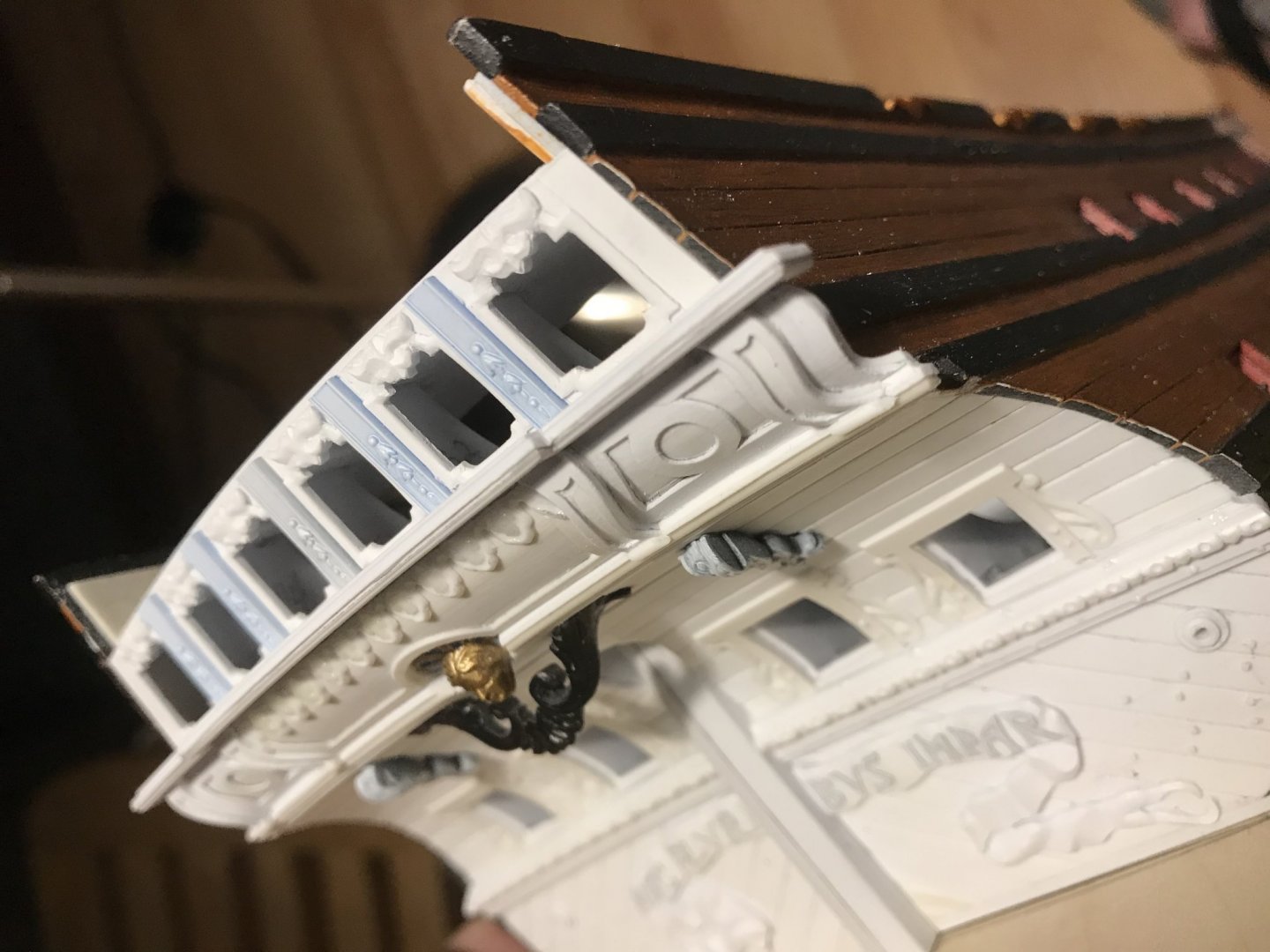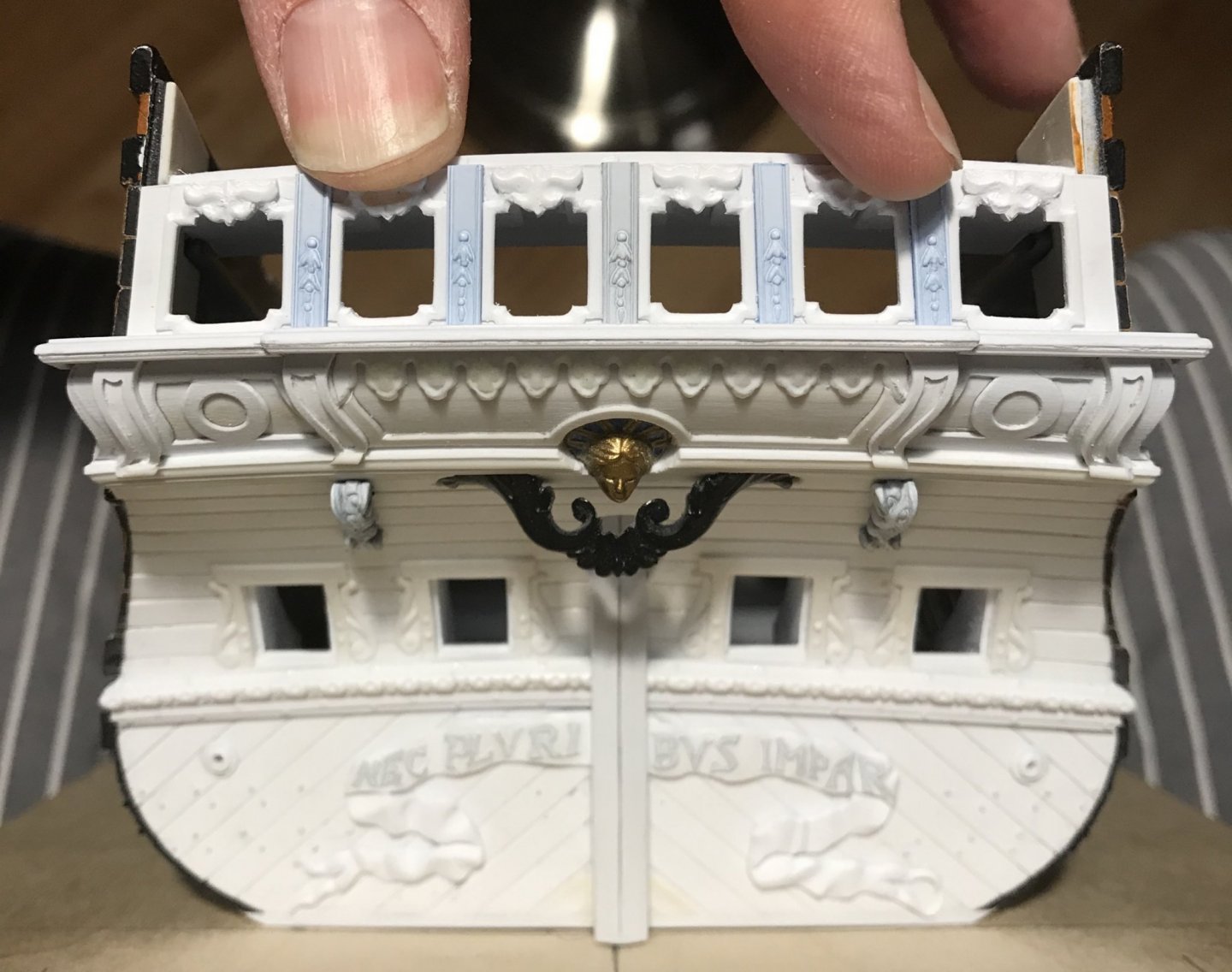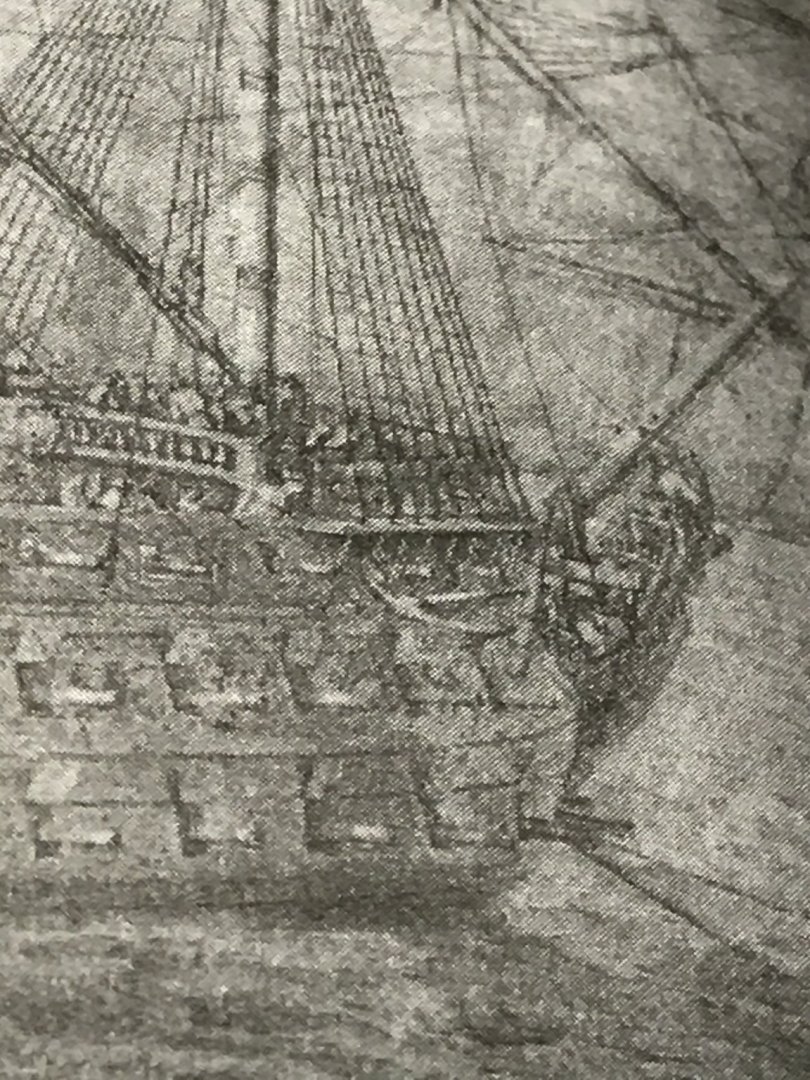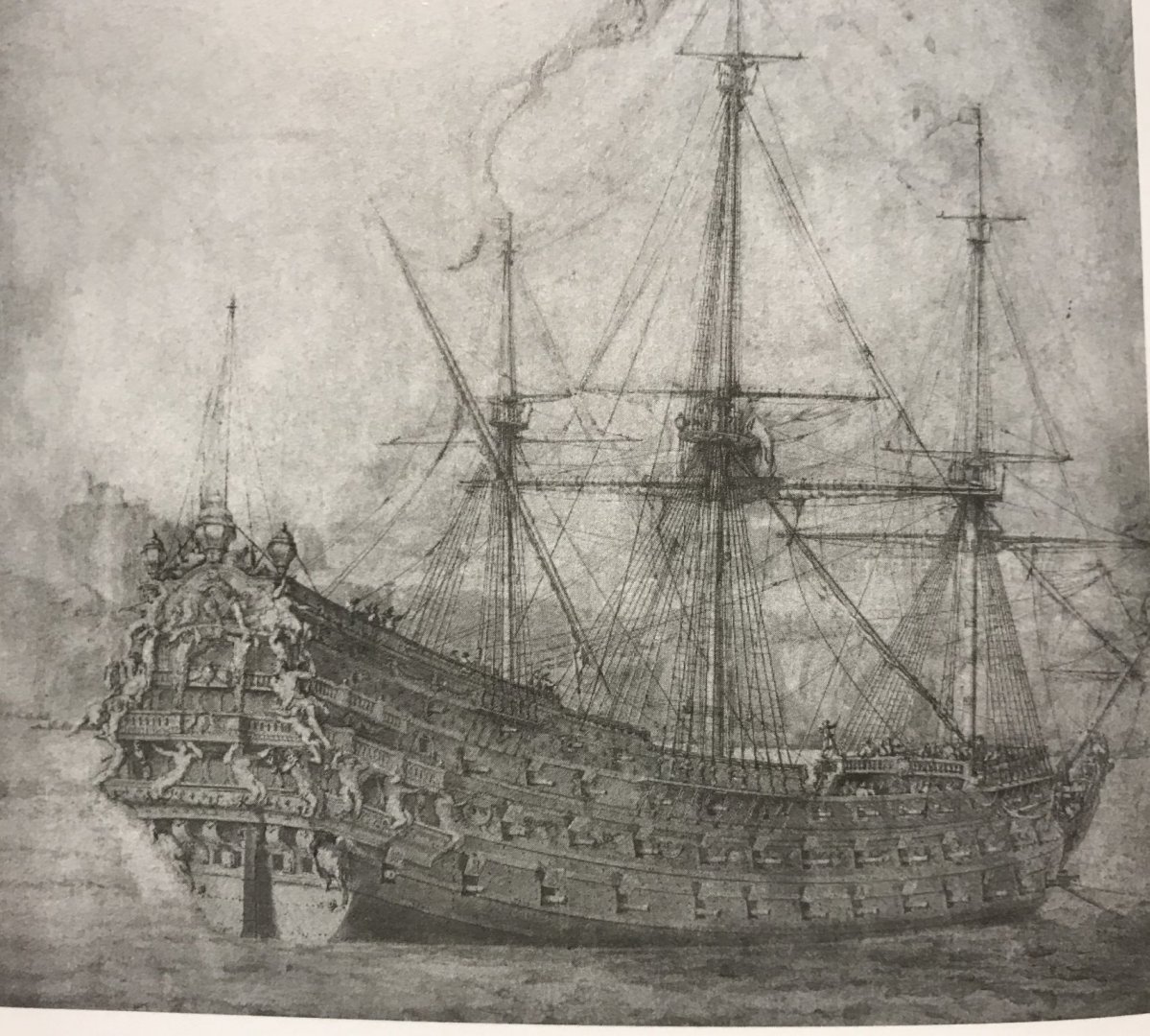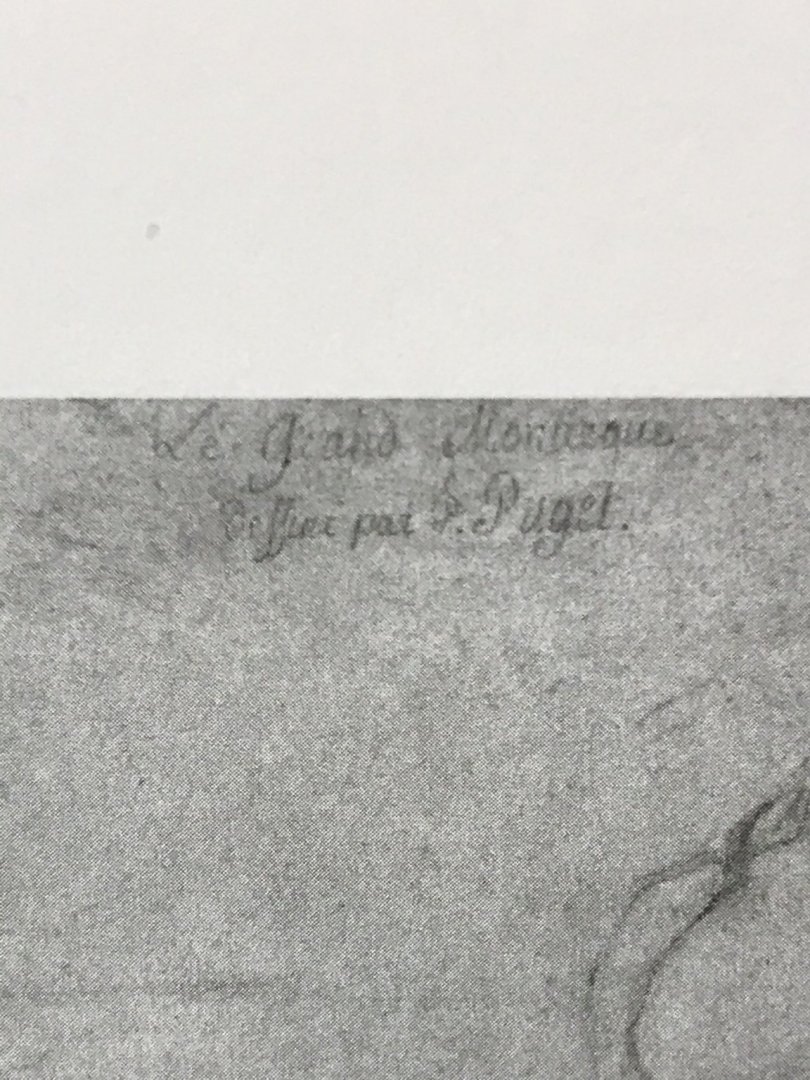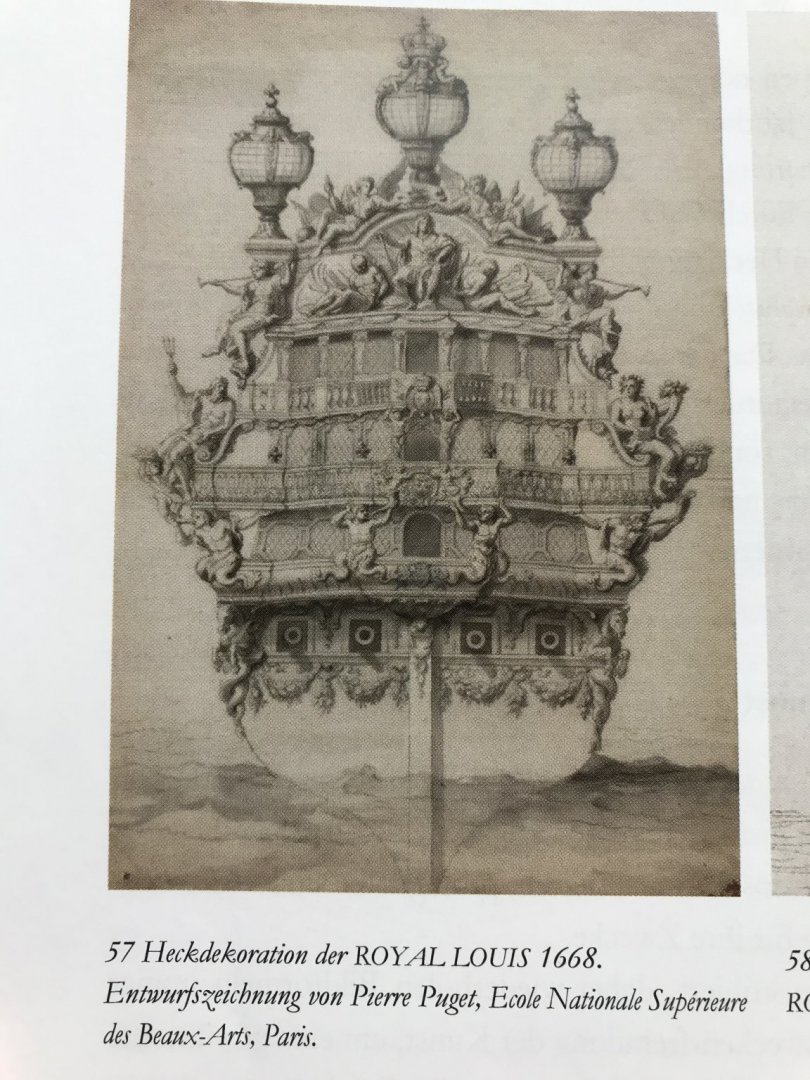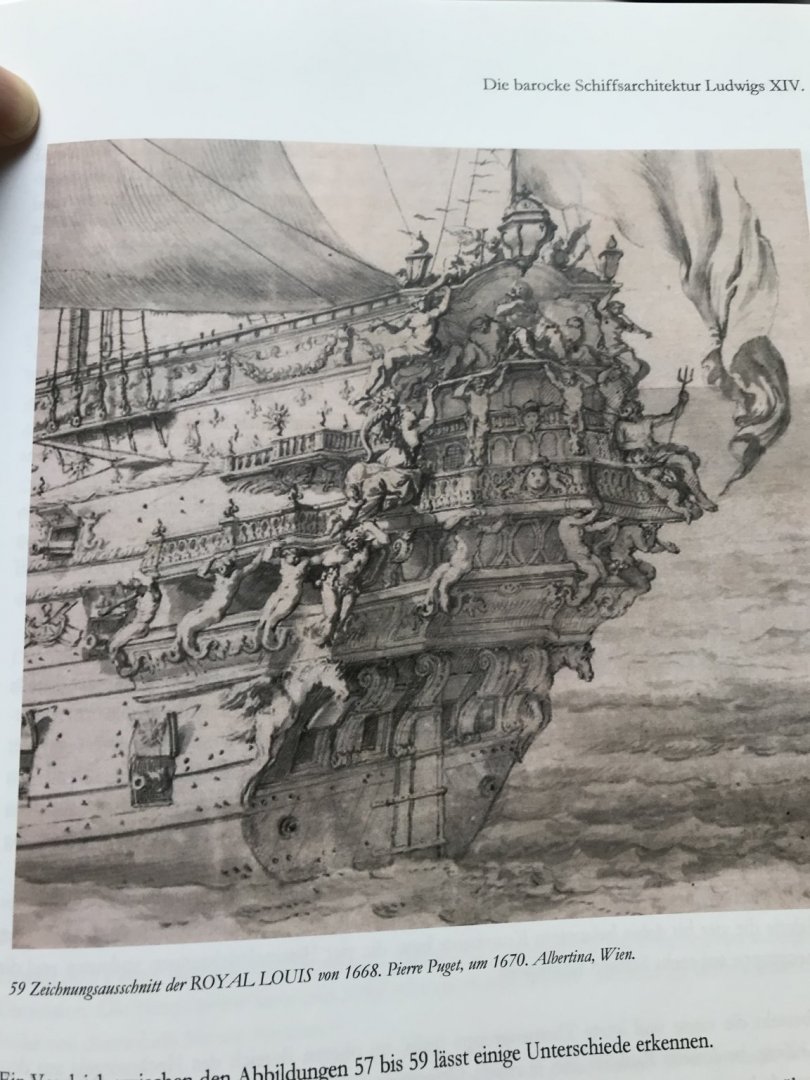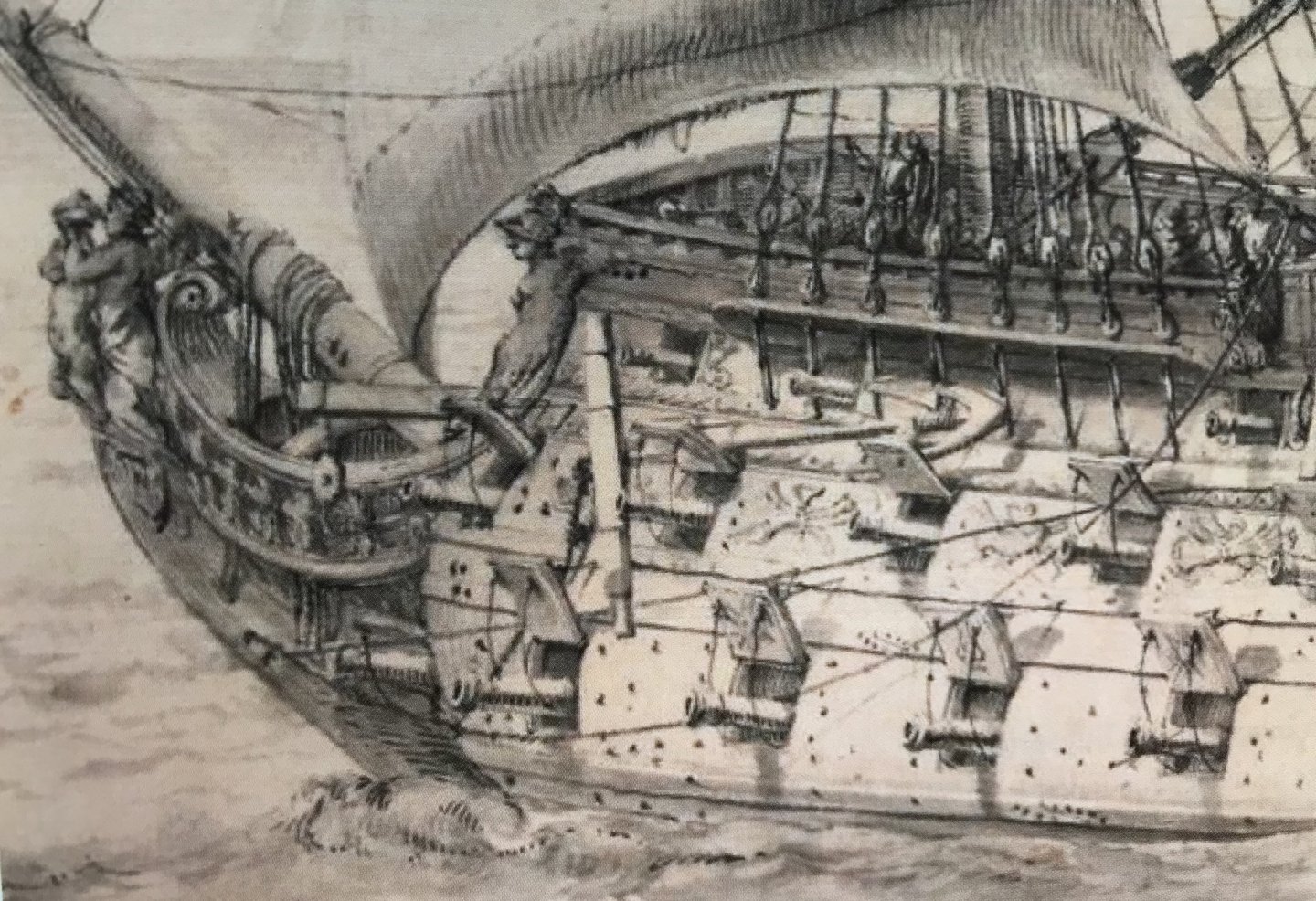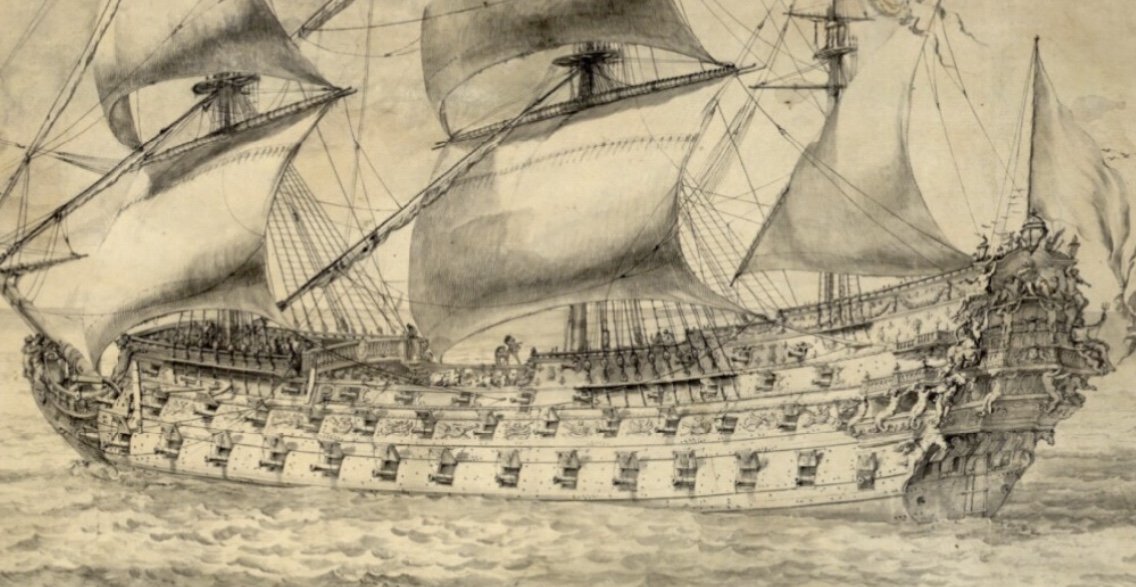-
Posts
3,308 -
Joined
-
Last visited
Content Type
Profiles
Forums
Gallery
Events
Everything posted by Hubac's Historian
-
It would surprise me, if you did not have these books in your collection, but I will go-ahead and mention them, just in case: Anderson is the Godfather of knowledge on this subject. While his book is a little more primitive, in terms of illustrations, he provides clear insight into the why and wherefore of all the rigging elements, as well as fundamental Continental differences. Lees is a much drier, technical read, but the book is absolutely loaded with beautiful, clear photographs. These books, together, are as reliable a cross-reference on rigging English ships like the Katherine as you could ever hope to find. No one could ever credibly fault you for following their guidance. I might say that this is my personal opinion, but it is actually a matter of fact. I wish you the best, however you choose to proceed.
- 1,035 replies
-
- royal katherine
- ship of the line
-
(and 1 more)
Tagged with:
-
She’s a Van de Velde drawing come to life, Doris! You really should consider a French ship for your next project, in order to maximize your sculpture talents. If anyone can do justice to the Monarque, it would be you.
- 1,035 replies
-
- royal katherine
- ship of the line
-
(and 1 more)
Tagged with:
-
It seems as though the smallest of details have been taking the longest time to get in order. The only benefit of the Pandemic has been time, and I have been using a lot of that time to create rudder hinges. I thought I had done a better job of photographing this whole process, but I did not. So, somewhat out of sequence, I will try to illustrate what I did. The layout for the hinges is determined by the reasonable available spaces on the lower transom. The best contemporary portraits and models I can find, show 3-4 hinges above the waterline. Here is a picture that shows the layout I arrived at, albeit a little further along in the process: What I failed to take pictures of was the marking out and making of pin impressions into the back of 3/64” wide styrene strip that make up the strap stock for the hinges. The strips are first scored, but not cut through; because they remain attached to the bigger styrene sheet, it is much easier to make your pin impressions, while using a steel ruler as your guide for spacing. Once you are satisfied with the outside appearance of nail heads, you can cut through the strip. It’s a good idea to true the styrene sheet edge with a file, before making the next strip, as the pin impression process sometimes deforms the edge. On the lower transom, these straps had to be applied in two segments to either side of the stern post; I couldn’t make a 90 degree bend without snapping the thin strap stock. So short strap ends were first glued to the transom surface, taking care to round the ends into a pleasing shape. The segment that joins the first and wraps around the stern post, toward the stern post centerline was eased around the corner after first filing a V-notch into the back of the strapping material. Here’s a shot of that same process to the rudder head: I then filed semi-circular accommodations, at the very center of the stern post for the gudgeons. These were cut from 1/16” brass tubing that BLICK art supply sells as a bag of random odds and ends of mostly brass, but some aluminum. While my execution of the following didn’t turn out absolutely perfectly, I thought the easiest way to make such small hinge knuckles would be the following. Because it is what I had at hand, I ripped some red oak into a 1/16” veneer and a backing block. I then drilled 1/16” holes in a straight line, through to the backing block. Oak is not ideal for this because the open grain has a tendency to pull the bit off-track. So, I drilled plenty of holes, until I had 6 that were satisfactory. Maple or birch would be ideal. I then inserted my brass tubing into a hole and used a DREMEL grinding wheel to cut just above the wood surface. I then used a file to make them flush with the wood surface (hardwood a plus here), and uniform. If I were to do it over again, I would ensure that I had definitely seated the brass rod against the wooden backer block before trimming; as it happens, what I used for the middle hinge knuckle was a shy 1/64” thinner than the others because the rod hung up in the hole, while filing. I ended up using it, anyway, because I wasn’t going to insert a pintle into the middle knuckle. Doing so would have made aligning the whole assembly unnecessarily complicated. From the angle this detail could possibly be viewed, the small gap is invisible. Making of the pintles should have been relatively straight-forward. The basic plan was to cyano appropriate brass rod into two of the remaining three knuckle segments. I could have made my life easier, if I had fitted the completed pintle assembly to the rudder head before applying the straps. The reason I did not do that was because I wanted to be absolutely certain of where to mark and cut into the rudder for the pintle reliefs. With the straps in place, though, I was compelled to bore-out circular openings for the pintles that would he housed by the straps. Access for doing so is limited by the shape of the pintle reliefs. I hope that makes sense. Here are some pictures: the rudder is actually somewhat functional; it’s port-to-starboard arc is restricted, somewhat, by the jaumier opening. This is a static display model, however, so I am happy enough that everything lines up. In other news, I’ve been experimenting with Liquitex Extra Heavy gel medium to brush in the tassel reliefs for the lambrequin carving: Liquitex is definitely the right medium for this sort of very low relief, however, my current stable of brushes is not fine enough, or up to the task. I will continue my experiments with other brushes. Work on the gratings continues, and eventually Henry’s extras will complete the complement. I also started to prepare the fore and main-mast, lower sections with reinforcing dowels that are drill-tapered to fit snuggly along their length: Before tapering, above. And after tapering, below: I definitely want to use styrene adhesive to join the mast halves, but am currently unsure about whether to bed the dowels in the masts with some combination of epoxy and cyano, or one versus the other. Any insight, here, would be greatly appreciated. Once the lower masts are assembled, I can cut the lower main mast down a bit, to accommodate the diorama set-up, while also accounting for my desire to raise the main top by about 3/8” to 1/2”. Ultimately, this will make better sense of the stock kit topmast dimensions (which will be scratch-made from wood, anyway), and the extra height there, will be cut from the t’gallent masts which are too tall. The main flagstaff, though, will be lengthened. So, that’s where things stand for now. I hope all are well and taking good care of themselves and family. We will all get through this difficult time. Thank God for the art and craft of ship modeling!
- 2,699 replies
-
- heller
- soleil royal
-
(and 9 more)
Tagged with:
-
I am always so impressed with your skill, Mike, and your tireless attention to detail.
- 607 replies
-
- winchelsea
- Syren Ship Model Company
-
(and 1 more)
Tagged with:
-
You are right, Marc, that these small adjustments to the rake of sheer do make a difference. I think what you have here, now, is very pleasing. When you refer to the “susbandes,” are those the iron straps that run across the barrel trunnions, thus securing the barrel to its carriage? I like your plan to carve a balsa model of the QG. My hope is that you will take and post as many pictures of that process as possible. I know you work in the medical field, so take good care of yourself in the midst of this crisis.
- 208 replies
-
- le soleil royal
- 104 guns
-
(and 2 more)
Tagged with:
-
Thank you so much Henry! I’m going to have to dedicate the diorama case to you, seeing as how you have made so much of this possible.😀
- 2,699 replies
-
- heller
- soleil royal
-
(and 9 more)
Tagged with:
-
Really beautiful turnings, Siggi! The Crown emblems and proof marks look fantastic. Really delicate banding. Superb!
-
My latest foray into kit-bashing madness, is improving the kit gratings, in an effort to convert them from flat to cambered. Below is my current inventory of grating pieces for the main and quarter decks. Mr. Maher donated an incomplete set of red gratings. The grey and black are my own complete set: I wanted to first see whether my idea was going to work, so the following picture illustrates the basic process, from left to right: Laminating one set of gratings to the other affords me the extra thickness I need for the camber. The blue-board sanding block I made is designed to feather the top grating layer down to near-zero at the edges. When it comes time to install these gratings, I will create new hatch combings for them. If anyone out there still has a spare set of complete gratings that they wouldn’t mind donating to the project, they will be put to good use here. As always, I endeavor to either return or pay the favor forward. All the best from Brooklyn, Marc
- 2,699 replies
-
- heller
- soleil royal
-
(and 9 more)
Tagged with:
-
Well, there was certainly no “retreat,” on the part of the French, at Barfleur. It is interesting to consider whether Soleil Royal would be dreamed of, in the way we do today, if Tourville had ignored the King’s initial orders to engage at all costs. Tourville’s success against all odds has elevated both he and the ship to mythical status in the popular imagination. Or, so it seems to me. Marc, you are very kind, but I happen to think your “Royal Balsa” will soon become the gilt-standard for all SR models, going forward. Both you and Tony Devroude (Dauphin Royal, 1668), have managed to capture these early hull forms with tremendous authenticity. Anyway, I am glad to see that you are back at it, and bringing the ship into sharper focus. It has been an interesting week of reading, and attempting to read a variety of interesting things. One thing of particular interest, here, is a 75-page manuscript by Quebec native Guy Maher. Guy is someone whom I came to know through the comments section of Trois Ponts. For a good number of years, now, Mr. Maher has been combing through the archives - original correspondence between Colbert and the Ponant/Levant yards, as well as older and more recent histories and biographies - to assemble what I personally believe is a very plausible and coherent history of Soleil Royal from her inception, through her refit. I don’t necessarily agree with every word, but he makes interesting arguments for the arrangement of her artillery, as determined by certain vagaries of her generally accepted dimensions. There is quite a lot of interesting biography on Puget and his influence, as well as many other key figures that were directly engaged in the development of the First Marine. There is even a truly fascinating discussion of period colors that were likely used on the king’s ships. A good number of pictures, as well! Mr. Maher is eager to share his research, but less so to start a blog of his own. It truly is fascinating reading, though, and I will be happy to send it to anyone who PM’s me. While written in French, it translates pretty clearly through Google Translate. Thank you to everyone for looking in, your likes, and comments. More to come...
- 2,699 replies
-
- heller
- soleil royal
-
(and 9 more)
Tagged with:
-
Well, Marc - THIS - THIS was absolutely worth the wait! Just spectacular craftsmanship, and your sheer reduction looks pitch-perfect for 1689. I like the accommodation you made in scarfing together stock for the sheer-strakes before moulding them - very clever. What is your construction plan for the lower finishing of the quarter galleries, up to the main deck open walk? Personally, because my model will be completely painted, my plan is to carve the lower finishing from wood (something very close-grained) and then build the lower quarter gallery lights from styrene, as I did at the stern. I will have to create horizontal styrene formers that establish the outboard parameters and shape of the quarter galleries, while giving me an edge-surface to scrape-in the various transitional moulding profiles. There are so many complicated shapes, in this area, that I was just wondering how you plan to approach it.
- 208 replies
-
- le soleil royal
- 104 guns
-
(and 2 more)
Tagged with:
-
So, as I try to close this chapter of the build, I got busy tying up a few if the loose ends. In preparation for securing the window plate, I thought it would be helpful to do a few things, in advance. Rather than attempt to paint the inner lip of the window frames with the glass in place, I pre-painted this inner reveal. I have come to realize that the artists’ acrylics I used for the deadworks are exceedingly fragile, and so - going forward, I will use purpose-made model acrylics wherever possible. To that end, I mixed a Tamiya primary yellow with a medium brown Tamiya shade until I was satisfied with my resulting yellow ocher color. I mixed brown, drop by drop, into the yellow bottle, so that I will have enough ocher to paint everything on the model, without having to re-mix and try and match shades. Following Druxey’s advice, acetate sheet was scribed with a sharp knife and medium-grey acrylic was wiped into the lines. This was all reasonably straight-forward, and produced excellent results. My initial plan was to glue-in L-angle styrene strip, to the vertical bulkheads, and a ledge strip to the inner bottom edge of the window plate, so that the individual panes would be housed and well supported, but floating. I quickly realized, though, that the positioning of the mullions, relative to the window opening will not always be ideal, if the loose pane shifts from side to side. With that in mind, I took a spare test pane (one of the QG side lights that I botched during the engraving process), and test-tacked it to styrene strip, with medium viscosity CA. It did not result in the dreaded cyano blush. With the success of that experiment, I decided to apply CA along the inner crease of the bottom ledge and one small tack dot of CA in the top center of each pane (behind what is the ornamental cartouche, on the exterior). This all worked out neatly enough: In hindsight, because the vertical bulkheads are relatively deep, it would have been beneficial if I had painted their sides flat black before fitting them to the model. Unfortunately, I did not do so, and the perfectionist in me refuses to make a gloppy mess of black paint work, after the bulkheads were fixed in place; access, here, is severely limited. In compromise, I decided to blacken the visible surfaces of the L-Angle, since there would not be any glue applied there. In the following picture, I have blacked-in half of the supports: On the other hand, I refused to compromise on simulating with paint, the impression of hull depth for the stern chase ports. Access, here, is limited, but a little better. After brush priming this area, as well as the port linings with ModelMaster flat white - which laid-down beautifully, BTW, and allayed my concerns about brush-priming the stern - I blacked-in the inner bulkhead surfaces, but not completely. I left most of what I wanted to show as red-ocher, in primer white. The blacking was merely approximate and done by eye. Knowing that I would be doing this, I had saved the bulkhead pattern and now used it to cut four sets of opposed masks that created a parallel line with the profile of the transom. This was very fiddly and could only be accomplished with tweezers and a palate knife to finesse the tape into position. Once satisfied and the tape edges burnished, I applied some clear dull-coat to the seam, in order to prevent any annoying bleed into the black. In hindsight, I could have made these reveals a little thinner, but the impression is still good, and at least the depth is consistent from one port to the next: I scraped away any ugly black paint over-brushing, just to quiet the voices in my head. And, finally, I glued in the window plate, the top transom moulding and the side pilasters: I discovered, after doing so, that I had made a mistake in trimming the pilaster tops flush with the window plate; the mistake is that I had failed to accommodate the raking angle of the stern, so I will eventually have to fill a gap between each of the pilaster tops and the wrapping stern balcony above them. This, of course, is the beauty of plastic - I can make this edit fairly easily by splicing-in plastic shims. One last shot of the transom interior, showing all of the interior structure: I gave the model a good dusting, as I will bring it to our club meeting tonight; I was astonished at how much plastic dust had accumulated, so far. I’ll have to be more mindful of that, now, as these windows will soon be completely inaccessible. As ever, thank you for looking in, your likes and your comments. It is all very much appreciated.
- 2,699 replies
-
- heller
- soleil royal
-
(and 9 more)
Tagged with:
-
Interested? Moi? But, of course! Link me up, please.
- 2,699 replies
-
- heller
- soleil royal
-
(and 9 more)
Tagged with:
-
I present to you the Soleil Royal memorial entryway!! Wonderful colors in both portraits. These prints were Christmas presents from many years past. I finally got around to framing them. BLICK did an amazing job.
- 2,699 replies
-
- heller
- soleil royal
-
(and 9 more)
Tagged with:
-
In designing the upper counter moulding/shelf, I began by scribing a piece of styrene to neatly fit the round-up, against the window plate, and I then traced the outline of the counter onto the bottom of this blank. Ultimately, I settled on an overhang of a light 3/32”, all around. At first, I thought the outline of the shelf should follow the ins and outs of the pilaster bases: But this seemed rather busy, the negative spaces between projections too small, and the overall design seemed to betray Berain’s intent. So, for the outline, I settled upon this: After trimming to my lines, I made sure to make a duplicate tracing - just in case I screwed up the moulding process: I made a pair of hacksaw profile scrapers; one for the shelf, and one for the secondary lamination, beneath the shelf: My first attempt for the shelf scraper produced a profile that was too deep and too flat looking, as seen on this piece of scrap: So, I reground the profile, and ended up with this: The scraper gets pretty close into the corners, but you still need to define them with a chisel, afterwards. The under-moulding is very narrow, so I first scraped the cove into the straight edge of a larger sheet, and then I “ripped” off the 1/16” that I needed. Just as I would with full-scale trim, everything is mitered. When dealing with parts so small, I find it easier to tack in the short pieces, over-long, and then fit the long pieces to them. Miters are first cut into the long pieces and then traced directly onto the shorts for perfectly mating joints: Here is how that looks on the model, from a variety of angles: To answer EJ’s question from an earlier post, I can now see that there will be ample air space behind even the side figures, so I will definitely be including the pilasters. At the moment, I am working out the fixation of the window panes, so that I can paint the window openings yellow ocher, and then secure the window plate and upper transom moulding in place. Thank you all for your interest!
- 2,699 replies
-
- heller
- soleil royal
-
(and 9 more)
Tagged with:
-
Thank, you Mark for the kind compliment, and thank you Chris for the tip on enlarged prints. Chapman, I can see what I think you are referring to in this enlargement of the bow: There appear to be two forward facing chase guns on the forecastle deck. This portrait, together with the other Vienna portrait: ... are clearly of the same ship. Perhaps, there are forecastle guns shown along the broadside, as well. If I enlarge this image, this is what I see: Are there gun barrels peaking between the shrouds, from the forecastle deck? Maybe. Let’s count visible artillery: LD: 14 + 1 un-armed chase port MD: 14 MD: 12 - mysteriously, there appears to be one gun missing in the fore chains area, just aft of the anchor QD: 5 FC: 2 visible in this portrait Add all this up, and you have a broadside of 45 X 2 = 90 + 2 chase guns, for a total of 92. If one wants to be generous and add in the six other missing FC guns, that still only brings you to 98, as opposed to Royal Louis’s 104. Add-in the two guns missing on the main deck and you’re up to 100. If you were to add-in 4 guns on the poop, you’d be at the RL’s armament, but they are clearly not visible in the portrait. Neither is the known lower deck piercing for the Royal Louis of 1668: 15 + 1 unarmed chase port. All of this adds up to a lot of addition of conjectural artillery, and I might add that the RL’s forecastle was never not armed. And, then, there are a number of ornamental differences between this: and this: ... the latter, of which, I believe to be the hand of either LeBrun or Girardon, as it is known that Puget was not permitted to work on the ornamental scheme for the RL. Chief among these differences is the reversal of Neptune and Thetis, between the two ships, and the RL has much more going on from the stern counter, down to the waterline. Also, the structure and support of the quarter deck stern balcony is markedly different between the two ships. And, I always return to the signature inscribed on the Vienna drawing of the Monarque’s starboard quarter: I believe these two ships were quite similar in appearance, but the RL was larger, more heavily armed and more ornate. I also believe that Puget made these two excellent portraits of the Monarque because that was his crowning achievement, at Toulon. The Monarque, and not the RL was his baby. For anyone interested, the following link will take you to a truly excellent review of Puget’s work at Toulon, and it makes mention of the hasty grafting of the RL’s ornamental works onto the Monarque, in order to satisfy Beaufort. It is an excellent read and a much clearer distillation of other Puget biographies that precede it: https://www.academia.edu/41636304/La_bonne_fabrique_et_le_superbe_ornement_Pierre_Puget_s_ship_decoration I know that the academic community all say that these portraits all represent the RL, but I respectfully disagree. Nobody that I have read, to date, can definitively tie the Vienna portraits to the RL; they all simply say that it is so, while vaguely acknowledging that there are some ambiguities, there. For his part, the author of Uber Den Wellen bases his analysis of the RL’s stern allegory almost entirely on the LeBrun drawing, which corresponds very closely with Hayett’s description. Even the biographer I just referenced does not think there are any extant portraits of the Monarque. I, however, think they are hiding in plain sight.
- 2,699 replies
-
- heller
- soleil royal
-
(and 9 more)
Tagged with:
About us
Modelshipworld - Advancing Ship Modeling through Research
SSL Secured
Your security is important for us so this Website is SSL-Secured
NRG Mailing Address
Nautical Research Guild
237 South Lincoln Street
Westmont IL, 60559-1917
Model Ship World ® and the MSW logo are Registered Trademarks, and belong to the Nautical Research Guild (United States Patent and Trademark Office: No. 6,929,264 & No. 6,929,274, registered Dec. 20, 2022)
Helpful Links
About the NRG
If you enjoy building ship models that are historically accurate as well as beautiful, then The Nautical Research Guild (NRG) is just right for you.
The Guild is a non-profit educational organization whose mission is to “Advance Ship Modeling Through Research”. We provide support to our members in their efforts to raise the quality of their model ships.
The Nautical Research Guild has published our world-renowned quarterly magazine, The Nautical Research Journal, since 1955. The pages of the Journal are full of articles by accomplished ship modelers who show you how they create those exquisite details on their models, and by maritime historians who show you the correct details to build. The Journal is available in both print and digital editions. Go to the NRG web site (www.thenrg.org) to download a complimentary digital copy of the Journal. The NRG also publishes plan sets, books and compilations of back issues of the Journal and the former Ships in Scale and Model Ship Builder magazines.



